Carry out acts of service
Carry out acts of service
Carry out acts of service
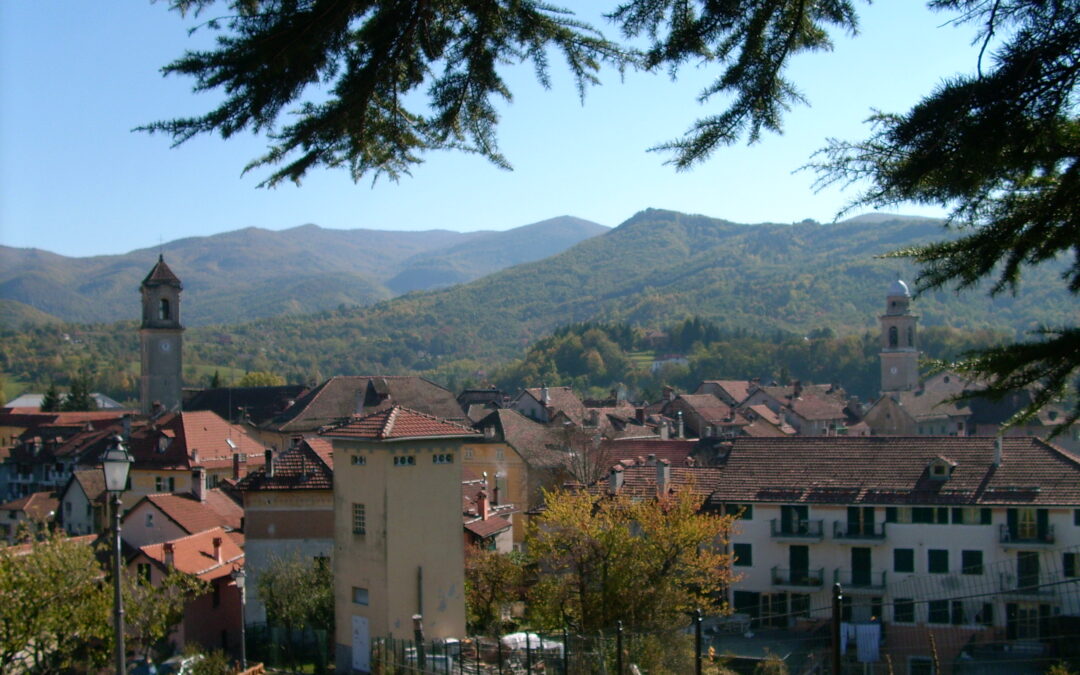
According to the calendar of major events for the Jubilee of Hope 2025, the Jubilee for Families, Children, Grandparents and the Elderly will take place from 30th May- 1st June and the Jubilee for Young People will take place from 28th July-3rd August. These will be two major events that will bring thousands of people from all over the world to Rome.
For the occasion, the Focolare Movement is offering several itineraries to provide opportunities to get to know more about the spirituality of unity and the lives of some witnesses of hope. In particular, a multi-stop tour for young people has been created around Italy entitled Youth and Holiness. We interviewed Paola Torelli and Lais Alexandre Pessoa from the Movement’s Youth Centres to find out more.
Let’s start with the Youth Jubilee: where did the idea of the “Young People and Holiness” tour come from?
The Youth Jubilee is a unique opportunity to set out on a journey, both physically in Rome and in other jubilee locations around the world. This journey is not just about visiting places, but above all it is an experience of encounter with God and with many witnesses of hope, whose lives can help us grow in faith and hope. Hence the idea of Young People and Holiness, a journey in the company of some witnesses of hope, for all the young people participating in the Jubilee at the end of July.
What is the Focolare Movement offering?
Several stops around Italy are planned:
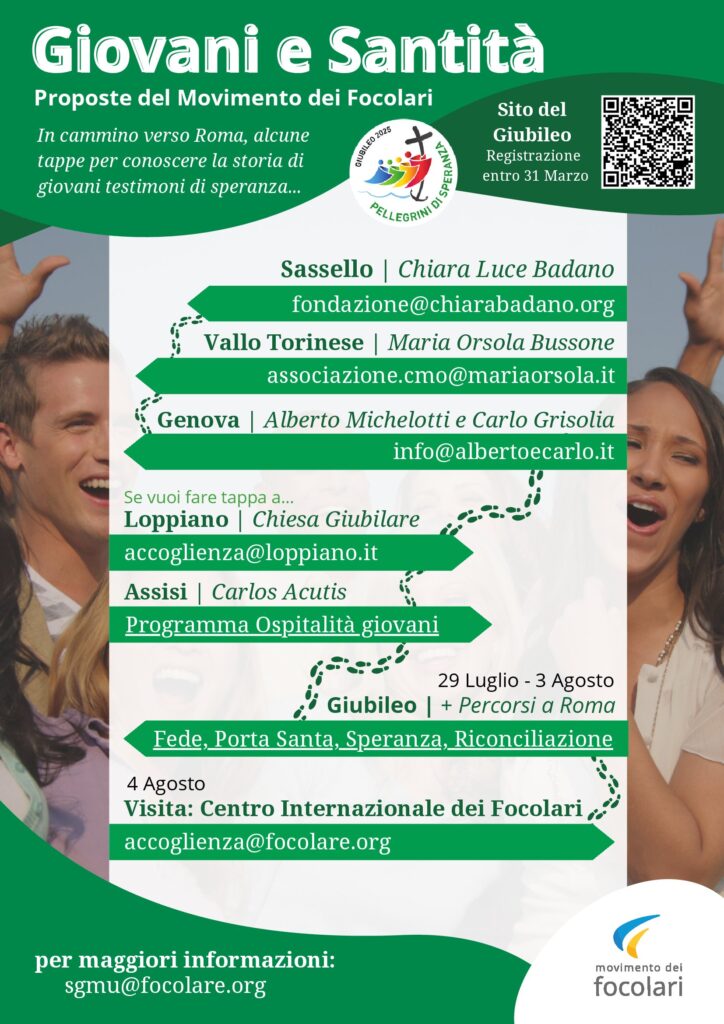
Can you choose only one stage or is it one complete journey that includes all the stops?
The proposed stages are independent, each group or person can choose which ones to participate in or, if possible, follow the entire route. Contact details are provided for each stop regarding programs and visits.
Are there any other initiatives for young people?
Every month, at the Focolare Meeting Point in Rome there is a gathering entitled Call to one hope – Young people on the Journey. Together with some other Movements and Associations, we offer a chance to nurture and strengthen “hope” through shared testimonies, reflection, silence, and prayer. It’s an experience of mutual discovery. Preparing these events together with the other Movements and Associations helps us grow and become ever more the Church.
Let’s move on now to the Jubilee for Families, Children, Grandparents and the Elderly at the end of May: what does Focolare propose?
There will be two events on Friday, 30th May. They are interactive routes to deepen the Jubilee of Hope, designed for families with children and young people up to the age of 12, They include reflections and games suitable for that age group. The first will take place at the Focolare International Centre where participants can visit several significant places, such as the house where Chiara Lubich lived and the chapel where she is buried, together with the co-founders of the Movement. The second event will take place in Rome in several churches and significant places, starting from the Focolare Meeting Point.
For more information click here or write to: sgmu@focolare.org.
Lorenzo Russo
Photo: Città di Sassello (Italia) ©Davide Papalini
Live through problems
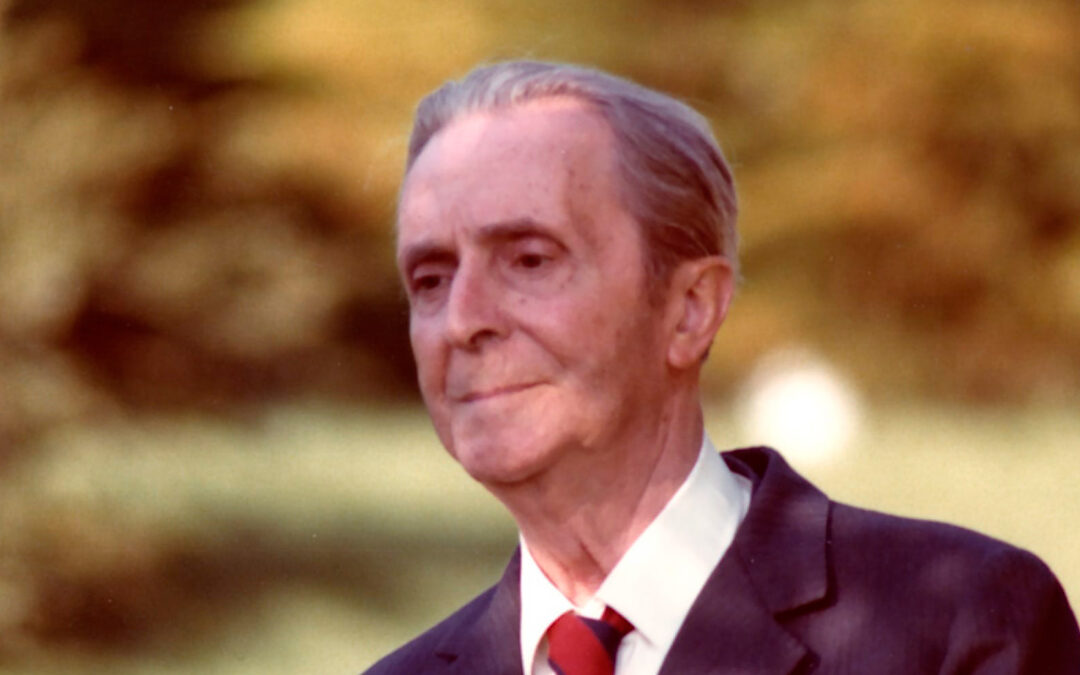
Wars, massacres and bloodshed, extreme polarizations, situations in which even pacifism can become divisive: this is the current situation in which we are immersed.
The figure of Igino Giordani (1894-1980), a man of peace because he was a just and coherent man, gives us some inspiration today to lift our gaze and continue to hope, attempting to foster a dialogue even where it seems impossible, to break down crystallised ideologies and absolutisms, to build an inclusive society and to rebuild peace on unity.
One of the most vivid witnesses of the culture of peace of the twentieth century, his pacifism draws directly from the Gospel: killing another man means murdering a being made in the image and likeness of God. Giordani therefore yearned for peace, spent himself in every possible way for it ways, engaged in dialogue with anyone in the name of peace, did not back down even when it came to lending his support to the ratification of the Atlantic Pact and ensuring the security and defence of Europe and Italy… We can say that his pacifism was comprehensive and spared no effort.
Let’s look at some of his writings.
“…World War I broke out […] And massive pro-war rallies took place in the streets, which I attended so as to protest against the war; so much so that once a person I respected, upon hearing my shouts, admonished me: ‘You’re asking to be killed!’…
[…] In the “radiant May” 1915, I was called to arms. […] […]
The trenches. It was there, that I left school and entered life, in the arms of death under the salvos of cannons. Mud, cold, filth, there I bitterly discovered that the soldiers were all opposed to the ‘murder’ called war, because murder meant the killing of a man: they all detested it… […] We were in Oslavia, near some ruins called Pri-Fabrisu: Later during a three-year hospital stay, I recalled the memory of the agony (from the Greek, “agon” meaning struggle) suffered in those places in a short poem entitled The faces of the dead. I remember the last verse that said: “This is curse of war” [2]».
Giordani was seriously injured and when he returned from the trenches, he spent three years in the military hospital in Milan, suffering irreversible damage to one leg. His pacifism was therefore grounded in life experience. Later, when he was engaged in political life, he always strove for dialogue with everyone, even with those whose views differed from his, firmly believing that every person should always be welcomed and understood. He never entrenched himself in absolute positions. This is how he described his speech in Parliament in favour of the Atlantic Pact:
“I remember a speech I gave in the Chamber on 16th March, 1949 […], about the Atlantic Pact, which had for too long been presented solely in its anti-communist aspect, that is, as a military build-up against the Russians […] I said that every war is a failure of Christians: “If the world were Christian, there would be no wars… […] War, I added, is murder, it is deicide (killing of God’s image, that is, of man who is made in his image) and it is suicide”
[3]».
Giordani’s speech was applauded by both the right and the left: a patient weaver of relationships, he highlighted the positive value of a choice by Italy that could have been interpreted as in favour of war. Giordani firmly believed that for peace to prevail, every possible path must be pursued, transcending strategic allegiances. He hoped that Christian politics would be capable of unravelling the existing polarizations to act in favour peace.
In 1953, he wrote:
“War is a large-scale murder, cloaked in a kind of sacred cult […]. It is to humanity, what disease is to health, what sin is to the soul: it is destruction and devastation, affecting both body and soul, individuals and communities.
[…] The end may be justice, freedom, honour, bread, but the means produce such destruction of bread, honour, freedom and justice, as well as human lives, including those of women, children, the elderly and innocents of all kinds, which tragically nullifies the very purpose for which they were intended.
In essence, war accomplishes nothing except to destroy lives and wealth
[4]».
Giordani therefore reminds us that peace is the result of a deliberate project: a project of fraternity among peoples, of solidarity with the most vulnerable, of mutual respect. This is how a more just world is built, today too.
Elena Merli
(Centro Igino Giordani)
Photo © Archivio CSC Audiovisivi
[1] Igino Giordani, L ‘inutilità della guerra, Città Nuova, Rome, 2003, (third edition), p. 57
[2] Igino Giordani, Memorie di un cristiano ingenuo, Città Nuova, Rome 1994, pp.47-51
[3] Idem, p.111
[4] Igino Giordani, L’inutilità della guerra, Città Nuova, Roma, 2003, (third edition), p. 3
Open up to Love
Be gentle
Accompany the suffering of others
Something new can be born from crisis
Go beyond prejudice
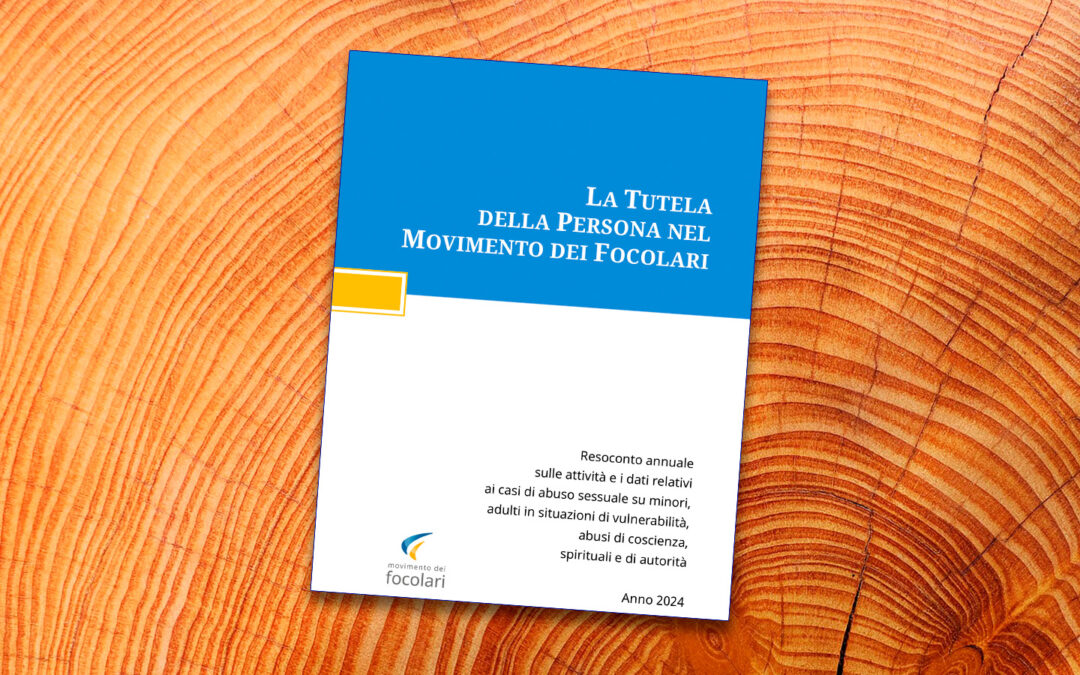
We are publishing the report of the year 2024 on the activities of the Focolare Movement concerning the Safeguarding of the Person, starting with the words that Pope Francis addressed to the Pontifical Commission for the Protection of Minors and with which in fact, he updated the mandate with which he had established it 10 years ago. We feel strongly called to fulfil this ‘integral conversion’ to which the Holy Father is calling us, which is never completely accomplished, but asks us to question ourselves continuously, to have for each person a humble, always attentive, protective and welcoming attitude. He asks us to continue with perseverance on the path of formation and authentic closeness, aware of the need for change, so that each person may feel safe, loved and respected in our environments and in our various activities.
2024: listening, formation, regulations
There were three elements that characterised the past year from the point of view of safeguarding in the Focolare Movement: listening and the involvement of victims and witnesses in various capacities in the process of reparation, and the formation of the people in positions of responsibility in the movement; the expansion of courses and formation events for all participants and to continue to establish the regulations, with the updating of the document for the “Procedures for handling cases of abuse” as well as the drafting of the Guidelines for Listening and Welcoming Services.
The meeting last November of those responsible for the Movement around the world, with some people who had been affected either by sexual abuse or abuse of authority, by members of the Focolare Movement, was of fundamental importance. People told their stories of great suffering and the serious consequences on their lives and on the communities that they were or still are a part of. Also present were some family members of one of the people abused who gave their testimony of the serious impact that abuse has on all members of the family. The words of one participant expressed clearly the importance of that moment: ” Listening to these people marked a before and an after. With delicacy and clarity, they expressed to us how much the Movement has failed in what is at the heart of its charism: unity and love of neighbour, because in many cases we have not only been co-responsible in some way, for the abuse committed, but we have also left people alone to cope with their suffering ”.
In addition, the contribution of the those who have suffered abuse together with the involvement of professionals in various disciplines, from outside the Movement, have been fundamental to the work done at the International Centre and in the local areas. This included the documents that have been produced, as well as for the formation in Safeguarding of the Focolare communities around the world, together with the planning and opening of some spaces for listening and welcoming.
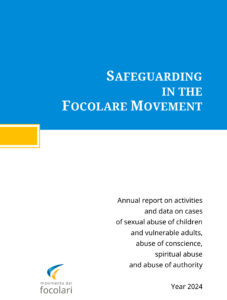
Read the report concerning Safeguarding 2024
Downloadable PDF in English.
A Study Commission has now been set up to look at the abuses of authority and spiritual abuses that have occurred within the Movement. The aim is to investigate their causes, so as to be able to change harmful practices and implement the necessary prevention. The study, which is still ongoing, also makes use of advice from specialists from outside the movement in various fields: psychological, pedagogical and legal. This project was supported and encouraged by the Dicastery for the Laity, Family and Life and, despite being in its early stages, its great importance is recognised. So it is clear that the creation and enacting of norms and Procedures is not enough, but the dynamics, leading to the various forms of abuse, must be investigated.
Finally, regulatory documents and guidelines have been updated, developed and produced (as illustrated below), which are also the result of a fruitful collaboration with the Pontifical Commission for the Protection of Minors, which has followed and promoted the new steps taken.
Stefania Tanesini
[1] Message of Pope Francis to the plenary assembly of the Pontifical Commission for the Protection of Minors, 25March 2025
Recognise the dignity of others
Unreserved welcome!
Take the first step towards others
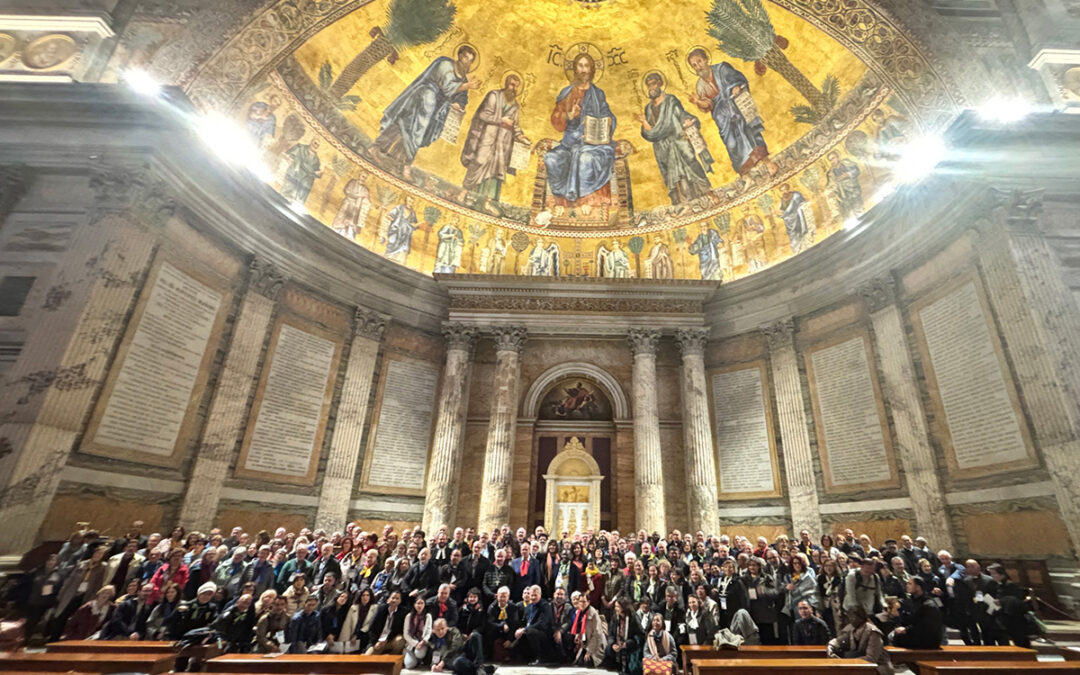
in an interview published on the Vatican News website, during the days of the ecumenical conference entitled “Called to hope – Key players of dialogue” promoted by Centro Uno, the Focolare’s international secretariat for Christian Unity, Margaret Karram, President of the Focolare Movement, said, “Today, more than ever, in the world in which we live, so full of divisions, tragedies, conflicts, where people do not engage in dialogue, meeting together is very significant.” Her words expressed a certainty that resonated in the hearts and in the experience of the 250 people from 40 countries and 20 Christian Churches and of the 4,000+ connected worldwide via streaming, who participated in the event.
The Conference, held at the Mariapolis Centre in Castel Gandolfo from March 26-29th 2025, opened with contributions from Jesús Morán, Co-President of the Focolare Movement and Callan Slipper, an Anglican theologian who said: “Ecumenism, by repairing our personal interactions within the Christian community, allows the Church to be herself. What humanity needs, we need too. Our spiritual health diminishes without it, just as every other dimension of human life cannot reach its fulfilment without the reconciliation brought by Jesus”. Morán concluded: “Unity rather than union and Christianity as a way of being rather than as a doctrine, can be two fruitful paths for ecumenism in response to what history demands of us today”.

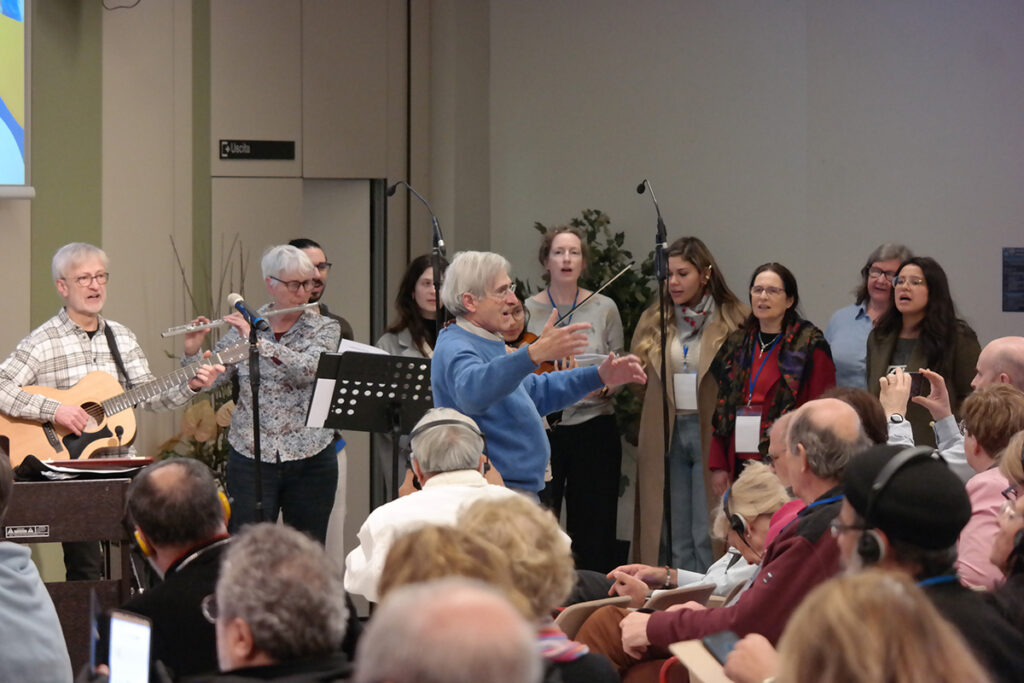
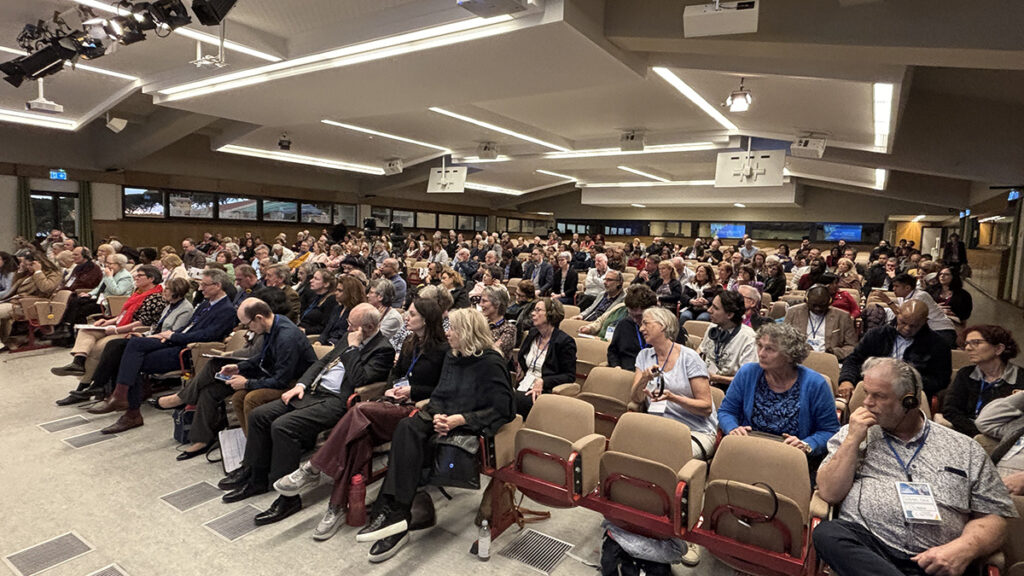
The conference proposed a method for walking in unity: the kind of dialogue that emerges from the spirituality of the Focolare, the dialogue of life, the dialogue of the people alongside a similar concept known as receptive ecumenism. Through her experience, Prof. Karen Petersen Finch, an American Presbyterian, highlighted the importance of involving more people in dialogue on the doctrine of the faith, which is normally reserved only for theologians, Church leaders and official committees for dialogue.
One day was dedicated to a pilgrimage to Rome with a visit to the Basilica of St. Lawrence the Martyr and the Abbey of the Three Fountains, where tradition places the martyrdom of St. Paul. In an atmosphere of recollection, one of the participants described the day as: “an encounter with the first martyrs of the undivided Church who, with their authentic life, faith and their witness, instil in us the courage to proclaim Christ today”. The pilgrimage concluded at the Basilica of Saint Paul Outside the Walls with an ecumenical prayer. Ecumenism has its biblical root in prayer, beginning with Jesus, who while praying, asked the Father: “That they may all be one”. His words, echoed in various passages of Scripture, invite us to ask anything of the Father “in his name, together and in agreement”. And so, together, gathered in unity, priests and lay people of all the Christian confessions present, jointly asked the Father for peace in every corner of the earth and for reconciliation among all Christians.
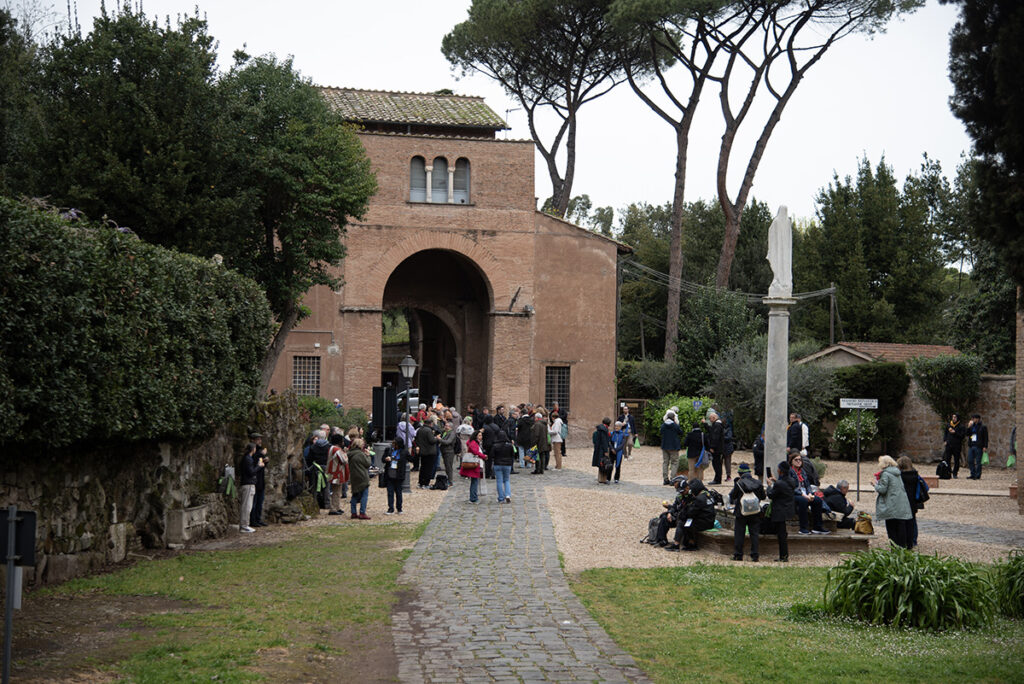
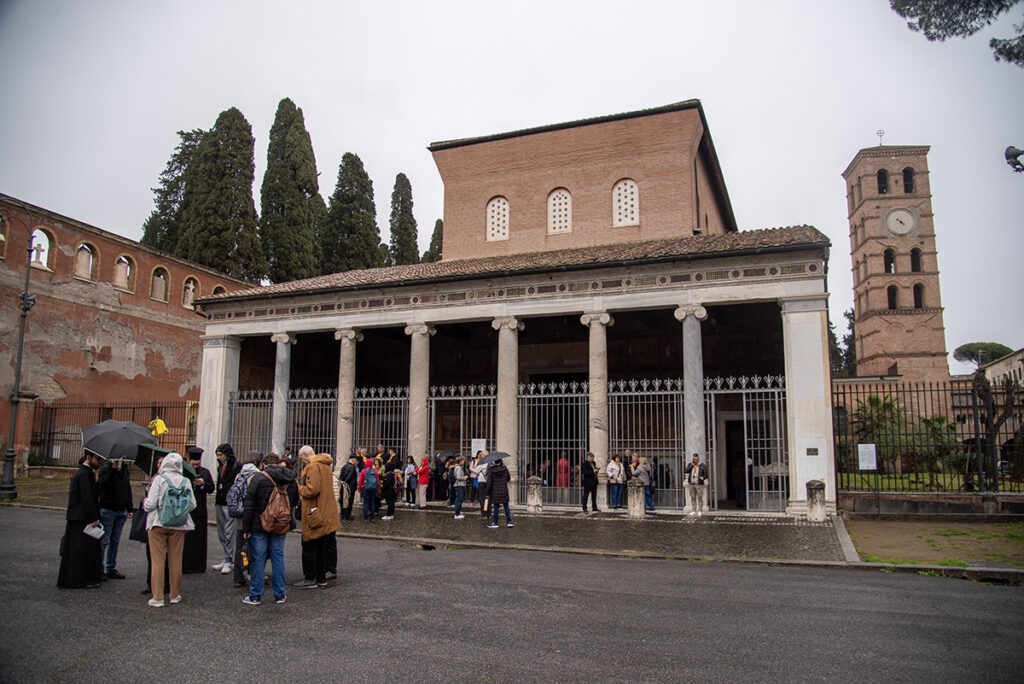
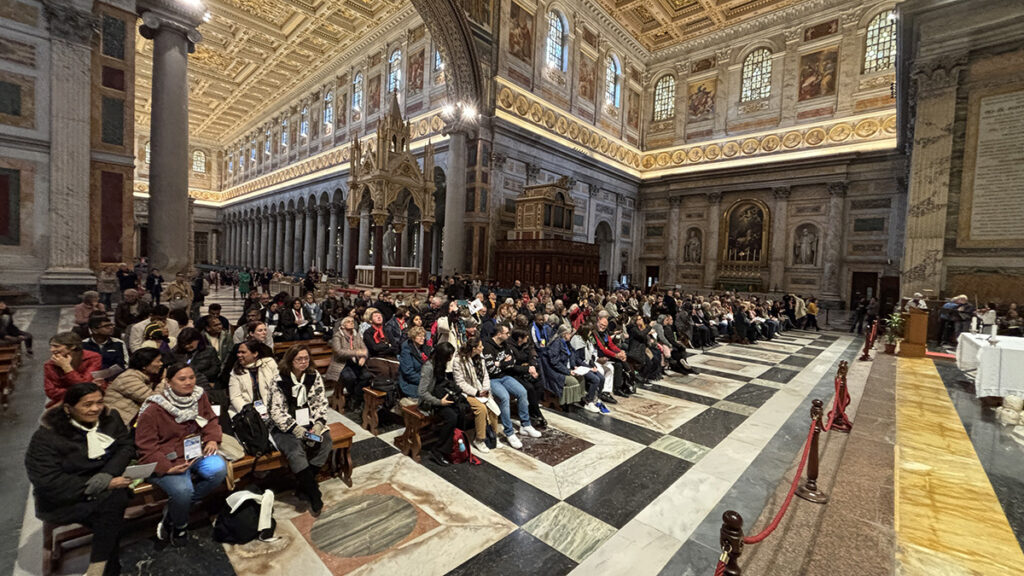
The themes addressed during the conference included the significant commemorations for 2025: the 1700th anniversary of the Council of Nicea; Easter which will be celebrated on the same day by all the Christian Churches; and the 60th anniversary of the lifting of the excommunications between the Church of Rome and that of Constantinople. Referring to the Council of Nicaea, Dr. Martin Illert, a representative of the World Council of Churches, said: “I am convinced that common prayer and reflection pave the way for unity, as they remind us of both our common roots and our shared mission.” Msgr. Andrea Palmieri of the Dicastery for Promoting Christian Unity observed: ” These events are undoubtedly important, but (…) words must be followed by concrete, prophetic decisions. I am convinced that the reflections initiated this year will contribute to the maturation of decisions that may shape the future of the ecumenical journey. ”
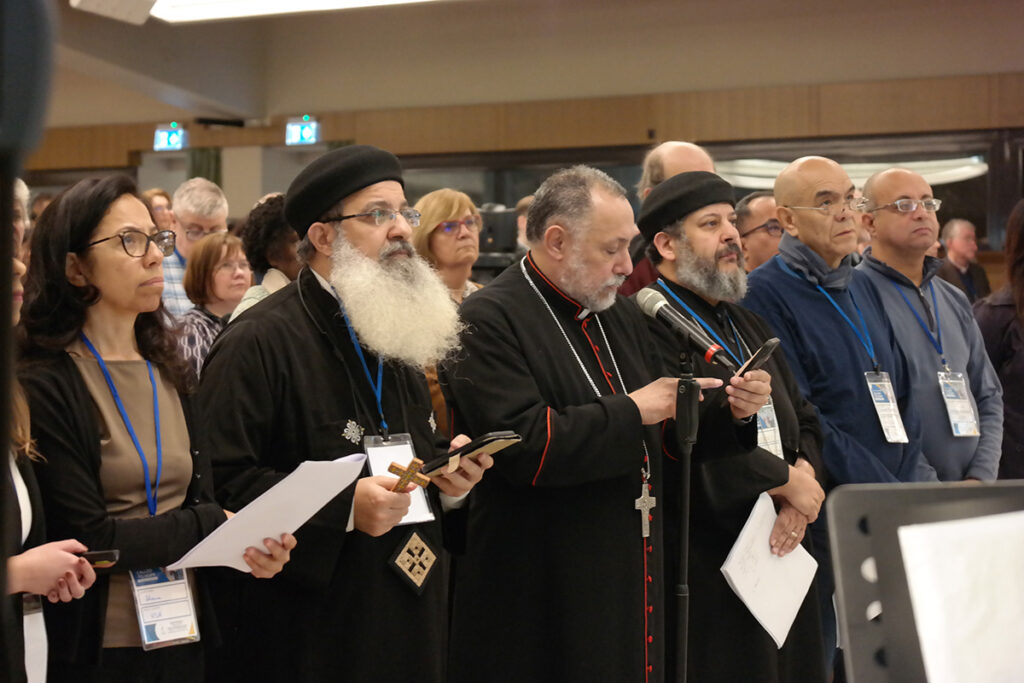
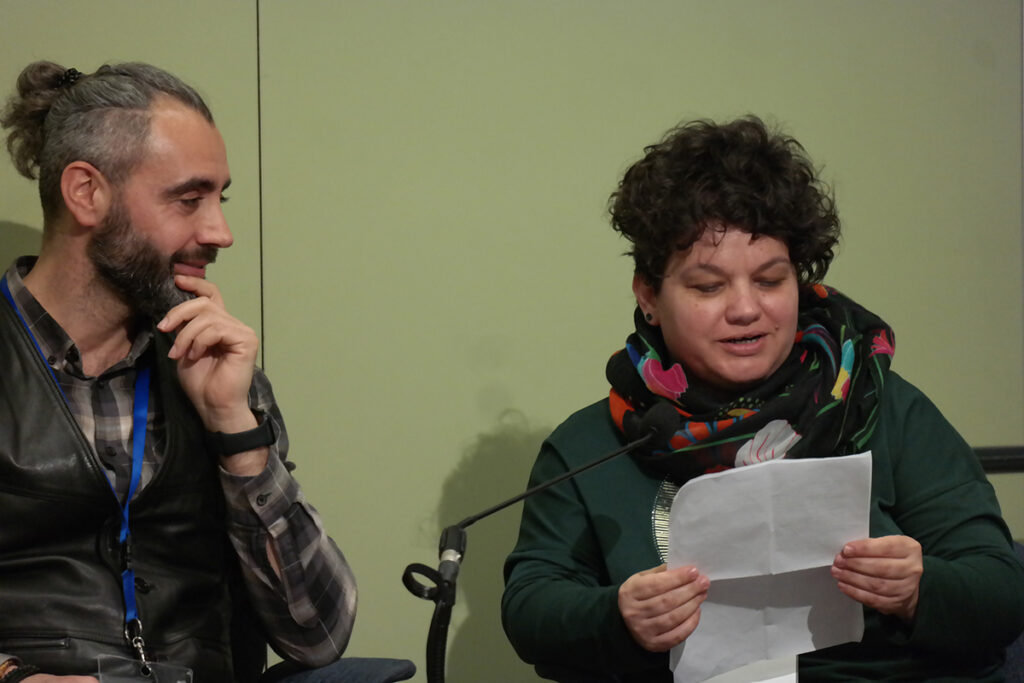
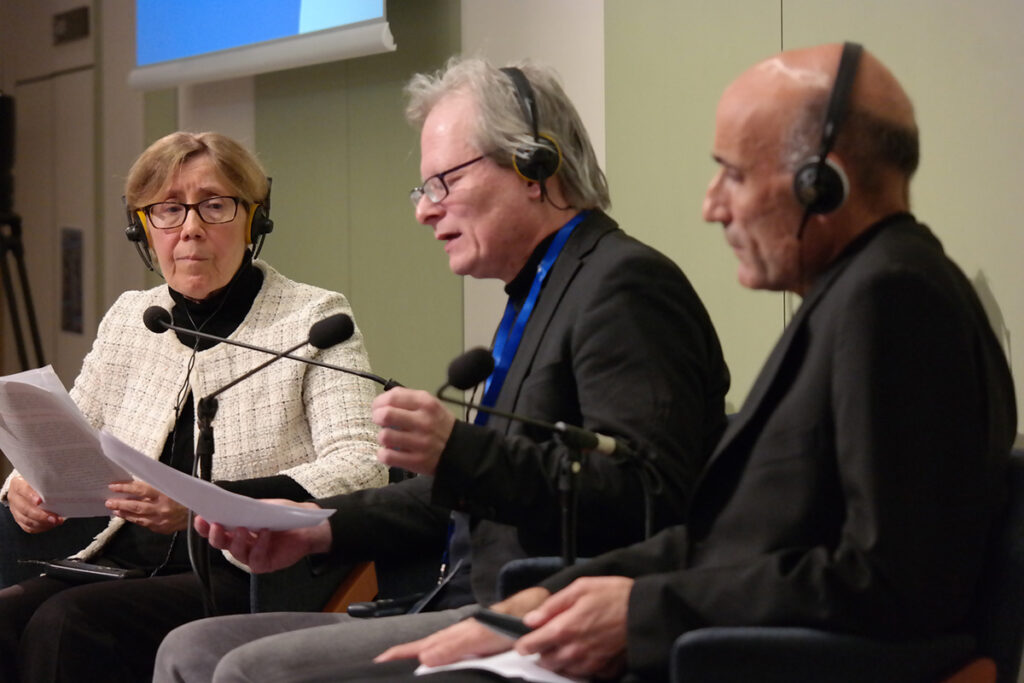
The Conference also explored how synodality can contribute to ecumenism. In a panel featuring participants of the Catholic Church’s Synod: three fraternal delegates (members of various churches), a Catholic Bishop and a Special Guest shared the lived experience of how the active participation of everyone contributed to affective and effective dialogue, which had as His Eminence Khajag Barsamian, of the Armenian Apostolic Church said, a “strong ecumenical dimension, which emphasized unity, shared spiritual experiences and mutual respect among Christians”. Rev. Dirk G. Lange of the Lutheran World Federation, affirmed, “The whole Synod as a spiritual exercise profoundly influenced my understanding of myself, my ministry, and my Church”. Monsignor Brendan Leahy, Catholic Bishop of Limerick (Ireland), added that the Synod’s method, the “Conversation in the Spirit,” made him “more attentive in my work and ministry to listen more, recognizing the seed of truth in every person,” while Dr. Elizabeth Newman of the World Baptist Alliance stated that synodality is grounded ” in the awareness and practice that one’s own point of view must not prevail. You don’t have to ‘win’.” Margaret Karram emphasized: “We know that hope is a virtue and we cannot lose it. We must nurture it, cultivate it within us so that we can give it to others,” and she invited everyone to increase hope and faith through “even small gestures towards others: gestures of solidarity, communion, and openness… only in this way can we hope”.
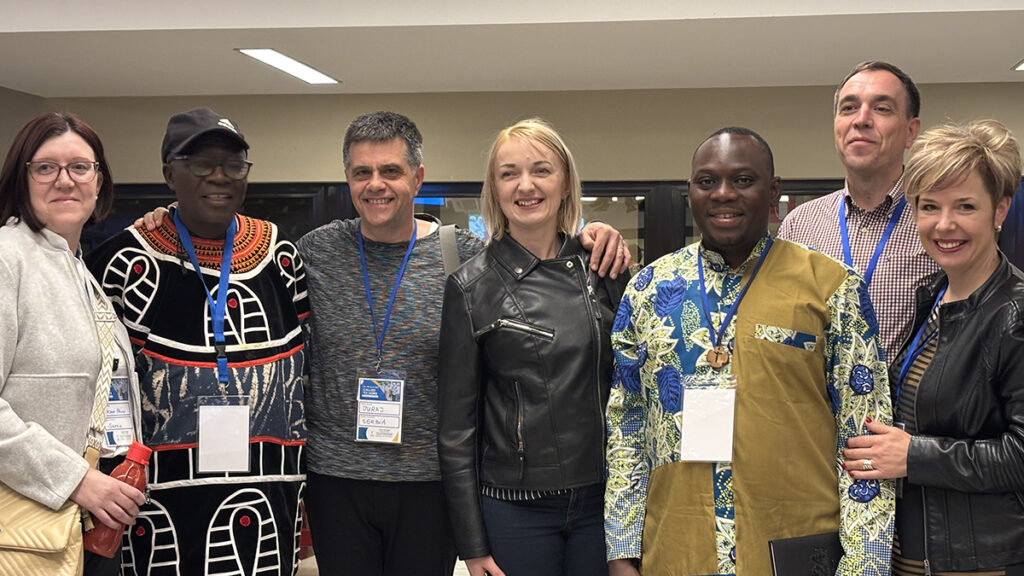
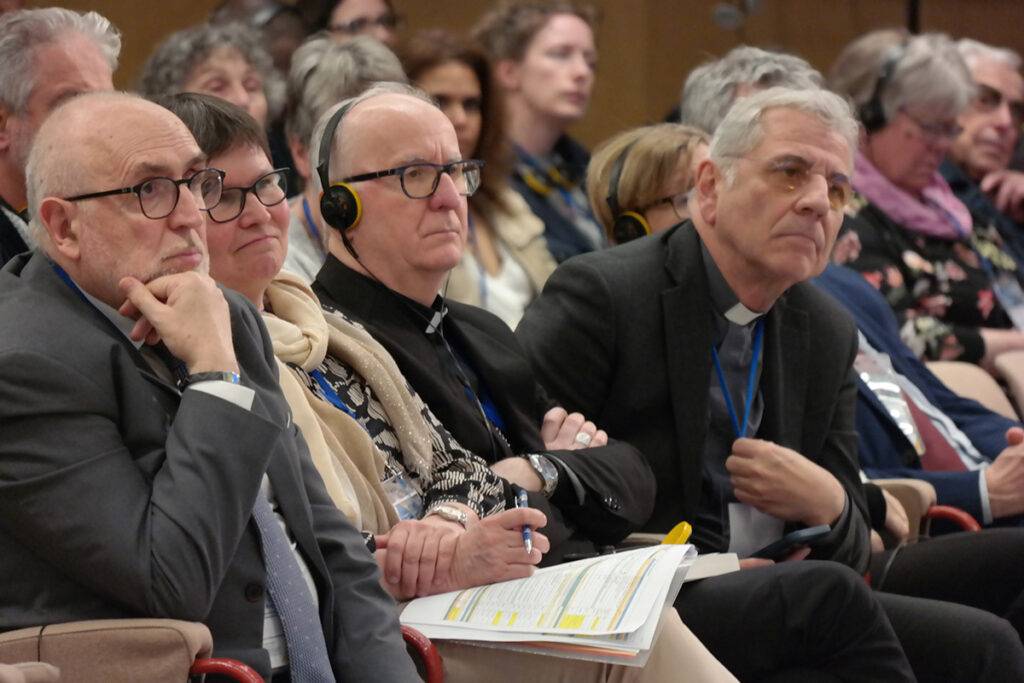
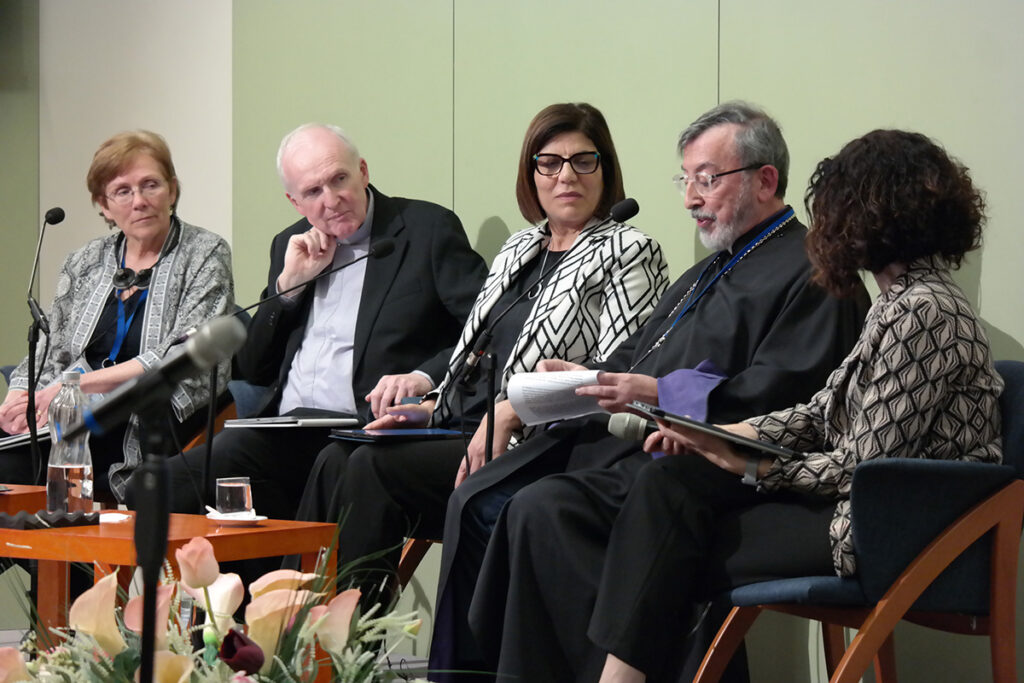
In summary, the Conference was a call to hope, marked by reflection, in-depth discussions, concrete actions and life testimonies which illustrated the path of ecumenical action at the global level (Global Christian Forum, JC2033), at the international level (Ikumeni– Latin America, Together for Europe, John17) and at local level (from Brazil to the Philippines, from Northern Ireland to Serbia, from the Netherlands to Venezuela, from Germany to Uganda…). It engaged churches, priests, laypeople, theologians, scholars, adults, and young people—truly, all were key players in the dialogue.
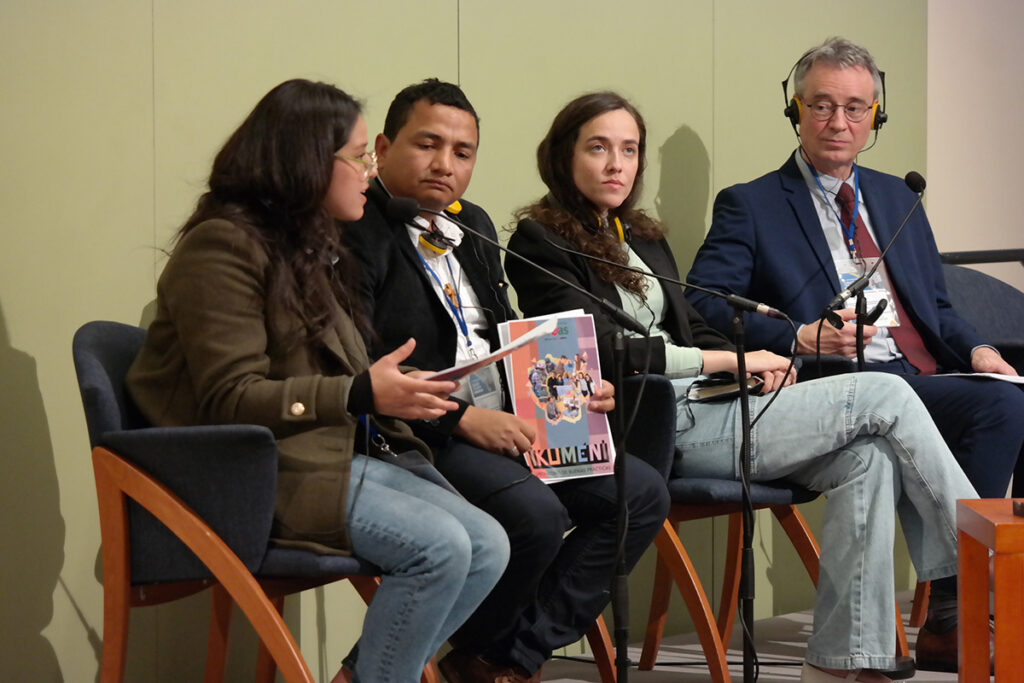
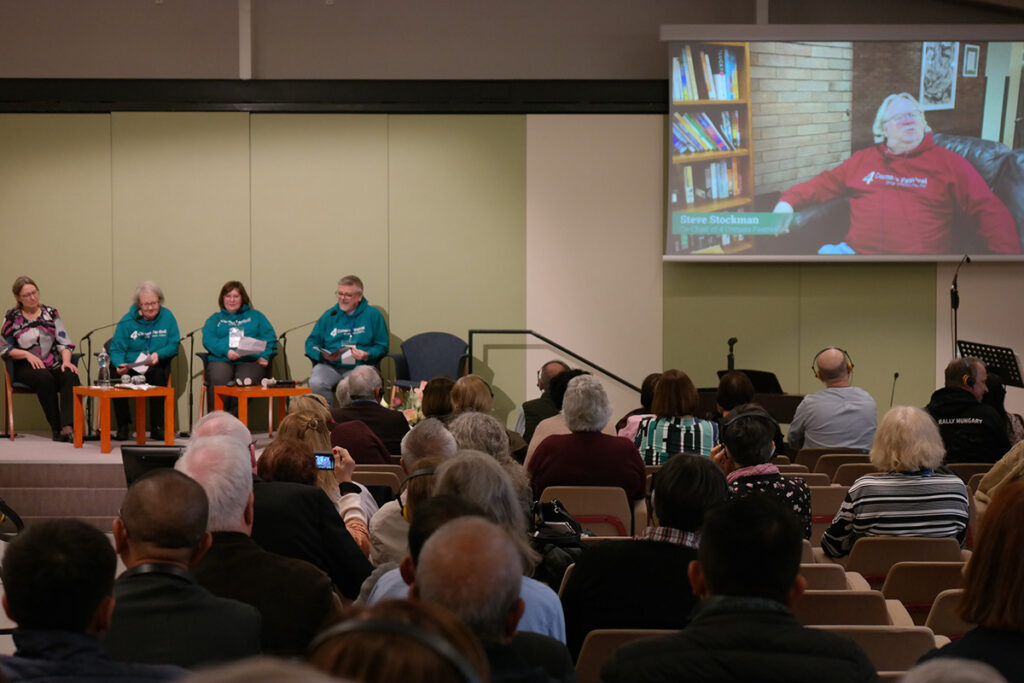
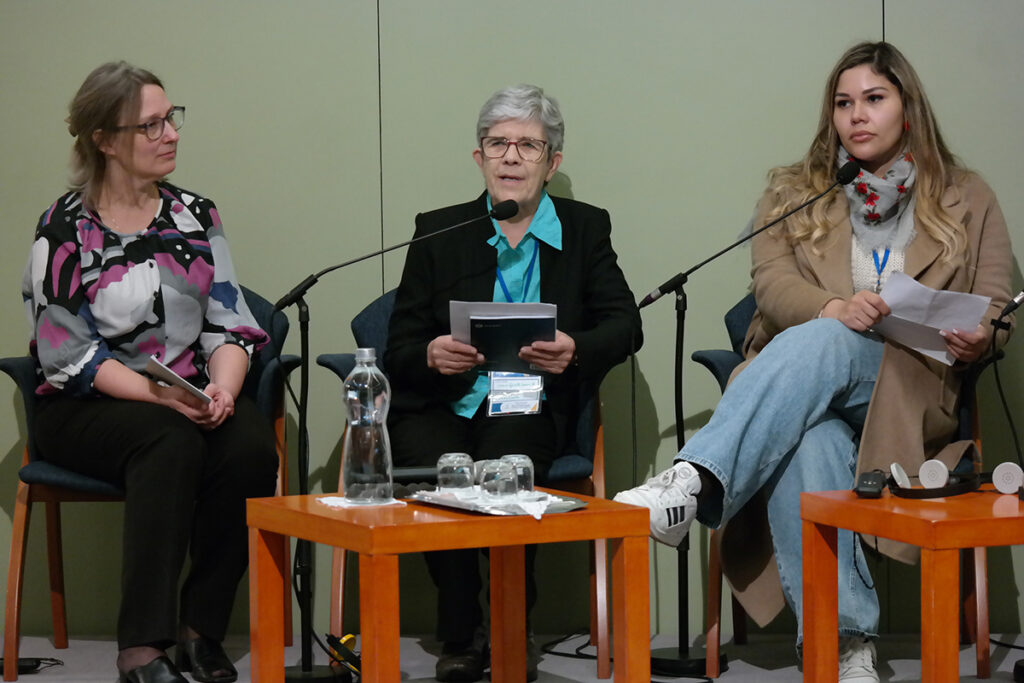
Carlos Mana
You can view the streaming of the Conference on the focolare.org Youtube channel
(Photo: © Javier García, Joaquín Masera, Carlos Mana – CSC Audiovisivi)
Be available
Give joy to those close by
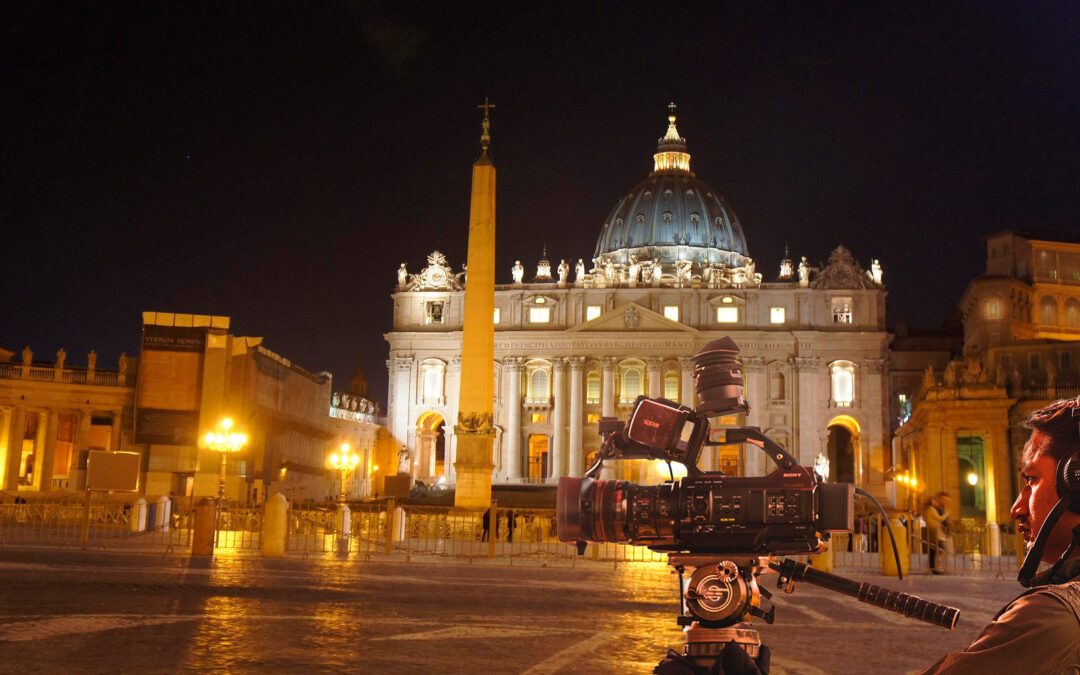
For over two years, on the initiative of NetOne, the international network of communicators of the Focolare Movement, a group of communication professionals, has been meeting online every month to explore themes related to the Synod of Bishops, in particular on synodality and communication. Key elements during these meetings include listening, silence, testimony and fraternal communication. In addition to these regular sessions, two webinars have taken place over the past two years: the first in April 2024 (an in-depth analysis is available online here) and the second in February 2025 entitled, “What kind of communication for synodality?” (VIDEO) This event was followed in various parts of the world with the participation of numerous communication experts connected from several countries.
Alessandro Gisotti, deputy director of Vatican Media, opened the series of interventions by citing three essential terms for a good communicator: Communication, Action and Community. He said, “In this Holy Year, we need a synodal communication that is able to accompany the people who will come, without the presumption of wanting to lead them but available to listen to them, to accompany them, to share a part of the journey together”.
From the United States, Kim Daniels, Professor at Georgetown University in Washington DC, Coordinator of the Synod of Study Group 3 explained, “Mission in the digital environment – our goal is to offer actionable recommendations to the Holy Father for the improvement of the Church’s mission in this digital culture, ensuring that it remains firmly rooted in our call to meet people wherever they are, leading them towards a deeper communion with Christ and with each other”.
Pál Tóth, a Professor at the Sophia University Institute in Loppiano, spoke from Hungary, explaining that “healing the deep wounds of the globalized world requires transversal collaboration including with those whose views differ from our own. The idea of differentiated consensus promotes a new type of social relationship: we collaborate for the realization of some values while remaining on different platforms for others”.
The starting point of the Synod is those on the margins. This emerged from the experience of Muriel Fleury and Beatrice Binaghi, respectively Head of Communication and Social Media Officer at the Dicastery for Integral Human Development. “Speaking for those who are exploited or marginalized by dominant processes means making these people visible. Without these countercurrent voices, everything would favour those who dominate, because silence supports those who mistreat, enslave, exploit, or render too many men and women invisible “. Binaghi described the collaboration network created among the “border bishops” responsible for migratory pastoral care in Colombia, Costa Rica and Panama, especially to address the critical situation in Darien through which hundreds of migrants pass every day. “Dialogue and communication have created communities, and the work that was previously fragmented is now more synergistic and impactful”.
The actress Stefania Bogo was asked to give two moments of reflection through an artistic reading of selected passages from the recent encyclical of Pope Francis, Dilexit nos and Chiara Lubich’s “The attraction of modern times”.
Erica Tossani, of the Presidency of the Synodal Assembly of the Italian Church, explained how important it is to listen, that “it is not merely a passive action, a silence waiting to be filled by the words of others. It is an active attitude that involves attention, discernment and a willingness to be challenged. Without listening, communication degenerates into polarization and sterile opposition”.
The experiences of synodality included that of Paolo Balduzzi, correspondent for the Italian Rai 1 program “A sua immagine”. He explained, “The stories told arise from a dialogue shared with the entire editorial team. For me, every interview is an encounter. And synodality begins with this encounter with my interlocutor, that is, entering into their story, into their lived experience and together seeking to grasp the most essential aspects of their story”.
The story of Mariella Matera, blogger of Alumera, a space for evangelization on social media, is the story of a communicator fascinated by the idea of transmitting the Gospel through the internet. She asked herself, “How can I be a little bridge between the web and Christ? In the Calabrian (southern Italy) dialect, the word Alumera refers to the old type of oil lamp. Just as the lamp, as long as it has oil, does not go out, so too I, as long as I have the love of Christ in me, cannot be silent”.
In conclusion, Anita Tano, head of communication for United World Project-NetOne Argentina recounted the experience of Genfest 2024 in Brazil, the youth event of the Focolare Movement which had the theme Together to Care. Featuring cultural exchanges, art and workshops, the aim was to recognise communication as a tool to take care of “one’s own life, that of others and that of the planet”. A message that emphasized the difference between simply being “connected” and being truly “united.”
The live broadcast was moderated by Enrico Selleri, presenter and author of the Italian Church broadcasters Tv2000 and InBlu2000, along with Sara Fornaro, editor-in-chief of the web version of the Italian magazine Città Nuova. The event was promoted by NetOne together with the General Secretariat of the Synod of Bishops, the Dicastery for Communication, the Dicastery for the Service of Integral Human Development, Vatican Media, the Synodal Way of the Church in Italy, TV2000, InBlu2000 and SIR (of the Italian Episcopal Conference), the Sophia University Institute, Weca (Association of Italian WebCatholics), the Città Nuova Editorial Group and the Pontifical University of the Holy Cross.
For more information and to stay in touch: net4synodcom@gmail.com
www.youtube.com/@SynodalCommunicationNetwork
Lorenzo Russo
Photo: © Pixabay
Promote dialogue with someone who is different from me

“I think that, after Don Silvano Cola, Don Pepe, was the most charismatic Focolare priest I have ever known,” remarked a priest from Italy upon hearing the news of the death of Don Enrico Pepe on 2nd March, 2025 at the Focolare Priest’s Centre in Grottaferrata (Rome). “He was a person with a pure gaze. He saw people in truth and also in mercy”, said another from the USA. Cardinal João Braz De Aviz, emeritus Prefect of the Dicastery for Consecrated Life, who presided at the funeral, said in the homily: “I thank the Lord for the care he has had for us priests, helping many not to lose the gift of the Christian life and the ministerial priesthood, because we were strengthened by the continuous search for unity among ourselves, with the Church and with the Work of Mary”.
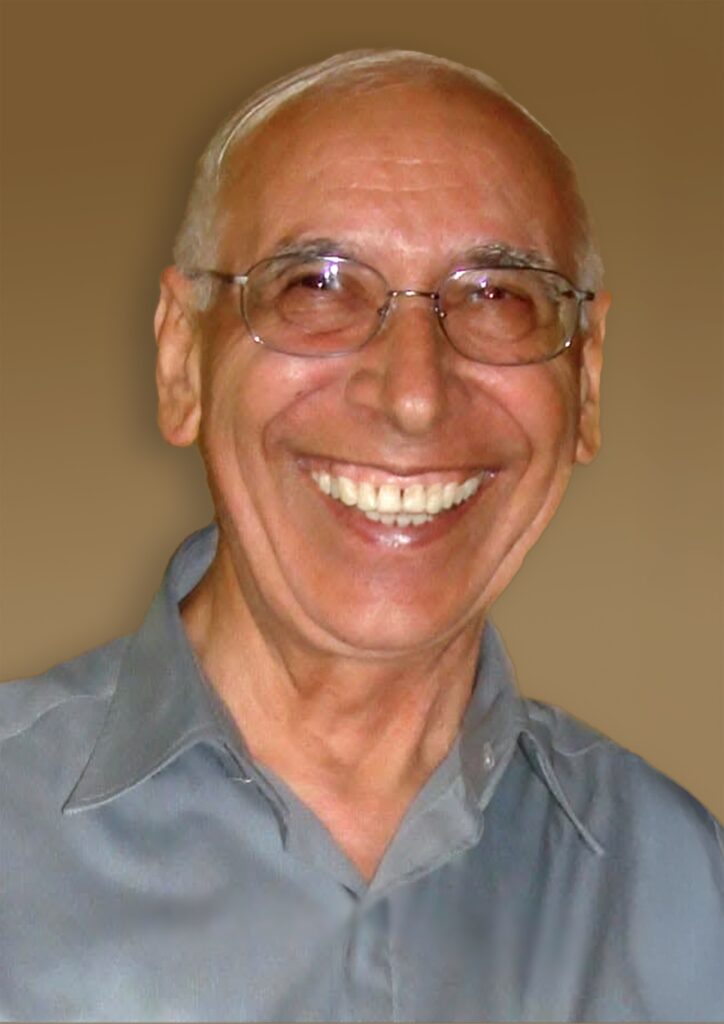
But who was Don Enrico Pepe? He shared a lot about himself in the book, An Adventure in Unity (CNx 2018).
Enrico was born on 15th November 1932 in Cortino (Teramo, Italy), the first of nine brothers and sisters. Despite the shadows of war, he enjoyed a happy childhood. Late in life, he would gladly return to those places, also to reconnect with the warmth of his loved ones: the Pepe “tribe”, now numbering 76 nieces, nephews and great nephews and nieces.
During his secondary school years, Enrico felt called to the priesthood and entered the seminary. He experienced a moment of doubt when a young woman was affectionate towards him, but precisely in that circumstance, he renewed his choice with even greater awareness.
He was ordained a priest in 1956 and in 1958 the Bishop sent him to Cerchiara, a town near the Gran Sasso, divided by two political factions that also affected the parish. Don Enrico, with his evangelical “cunning”, manages to carve out his path and the situation soon calmed down.
In 1963 he met the Focolare Movement. Together with Don Annibale Ferrari, he travelled every fortnight from Teramo to Rome to meet Don Silvano Cola at the first Priests’ focolare. A year later he was offered the opportunity to move to Palmares in the North East of Brazil, where Bishop Dom Acacio Rodrigues had turned to the Focolare Movement, due to the serious shortage of priests. In 1965 Don Pepe became the parish priest in Ribeirão, in an area of sugar cane monoculture with burning social and moral problems. He responded with a pastoral approach enlightened by the Second Vatican Council and by his own common sense. Over the years, a Priests’ focolare was born, a community in which Dom Acacio frequently participated.
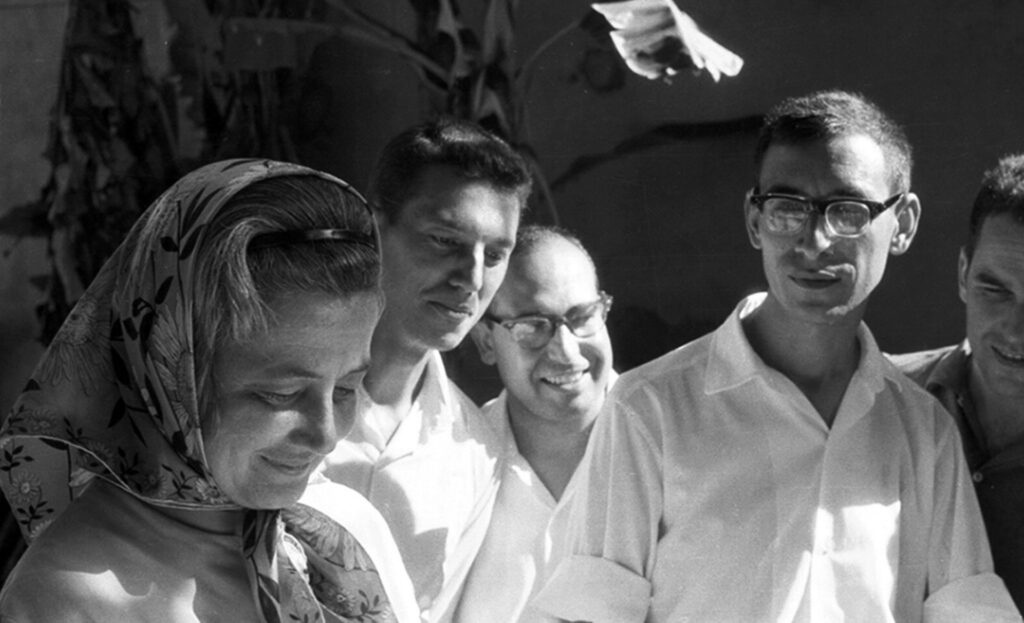
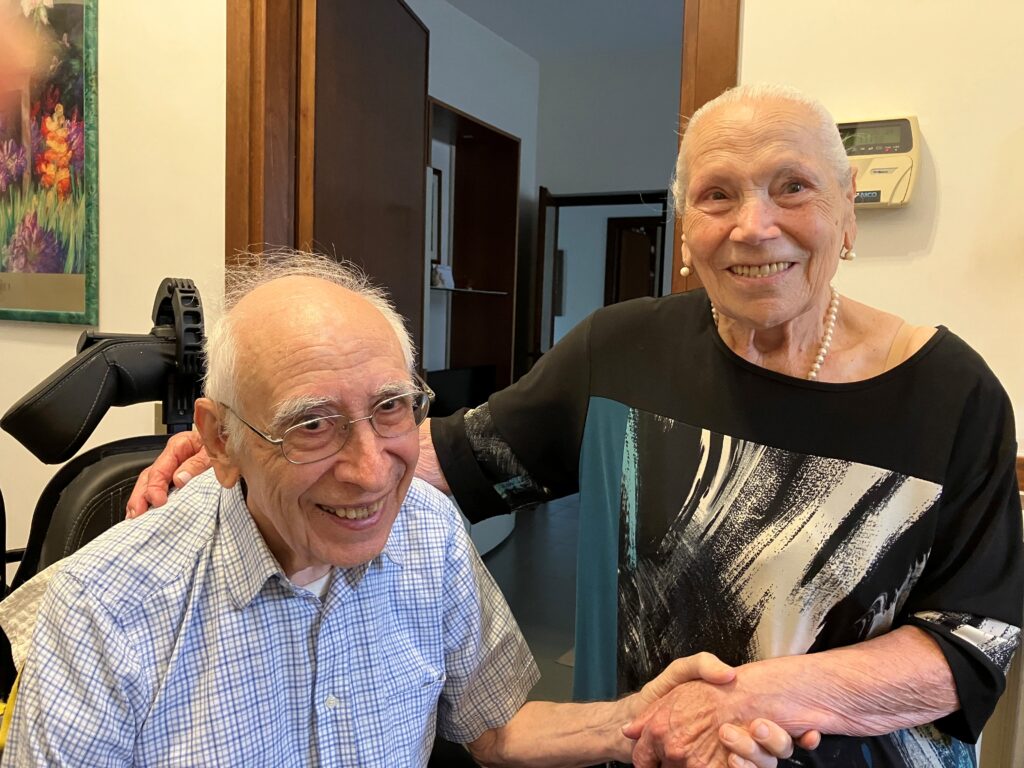
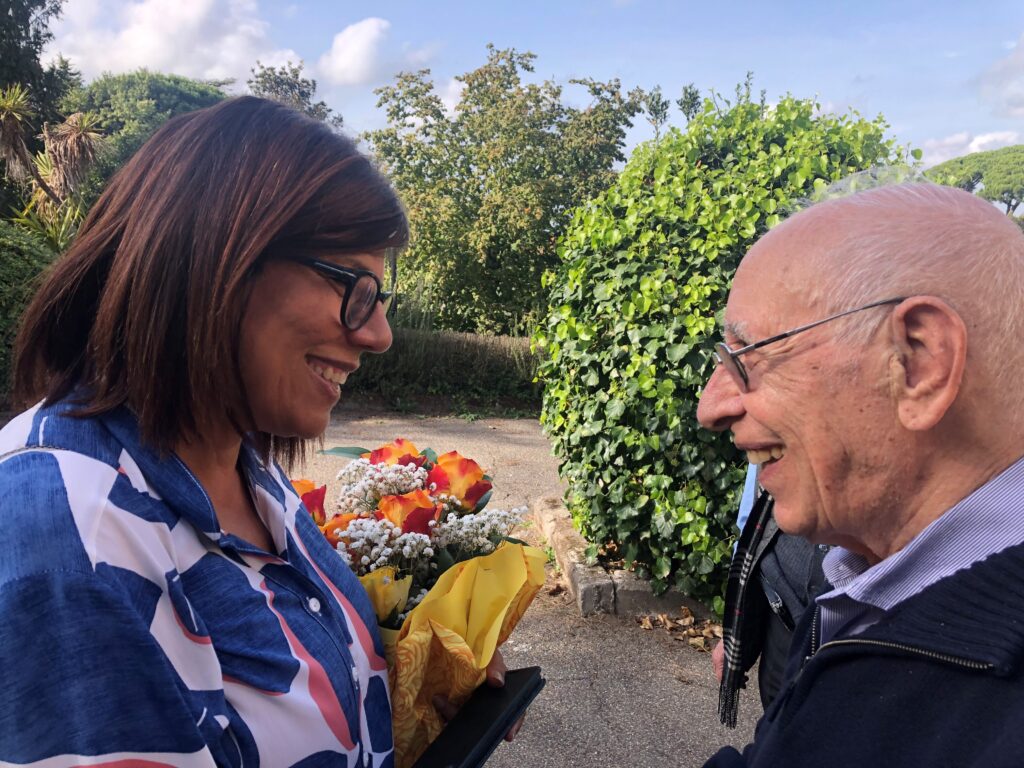
After a few months back in his homeland, in 1969 he left again for Brazil, this time to devote himself entirely to the Movement and to develop the spirit of unity among priests. In 1972 he relocated for this purpose to the Mariapolis Araceli, the little town of the Focolare near Sao Paulo. Years later, Don Pepe wrote to Pope Francis, “At that time, the Church in Brazil was going through a tremendous crisis, especially among the clergy. Together with the focolarini, I began to offer the spirituality of unity to diocesan and religious priests and seminarians. In this way, a new and joyful life was awakened in many dioceses and religious congregations.” This led to an unexpected result: “In the early 1980s, the Holy See began to appoint some priests who lived this spirituality as bishops”.
In 1984, Don Pepe was called to the Priests’ Focolare Centre in Grottaferrata (Rome), to look after, together with Don Silvano Cola, the thousands of priests who were living the spirituality of unity and the life flourishing in parishes around the world. In his spare time, he compiled the lives of Martyrs and Saints. This led to a book by the publisher Città Nuova that was so well received that he was asked to expand it to three volumes.
In 2001, the case of the Zambian Archbishop Milingo broke out. When he repented, the Holy See sought someone to guide him through a process of renewal and turned to the Focolare Movement. Don Pepe was assigned this task. Years later, Cardinal Bertone, then Secretary of the Dicastery for the Doctrine of the Faith, wrote to Don Pepe: “We met at a special moment in the life of the Church in Rome, without ever having met in person, but we sensed a convergence of ideals, of mission and of transmitting God’s merciful love, which sealed our relationships.”
In his later years, he faced significant health challenges. Don Pepe commented “In Brazil I passed through many airports and now I often see myself on the runway, ready for the final flight, the most beautiful one, because it will bring us to the Beyond”.
Hubertus Blaumeiser
Look to the future with hope
Get out of your own box!
Live the present moment
Trust in God

Nostalgia is a very specific feeling and, in many people, it often gives riseto moral, philosophical and spiritual questions. Etymologically it means “pain of return,” and sometimes has an indeterminate sense: sometimes it is not linked to a past made up of real places, people or events but to a deep emotion that makes us yearn for something beautiful, just and universal. It is as if we know we are part of it or called to this “something”.
The theme of exile runs through the history of human thought: the voyage of Odysseus (sung in Homer’s Odyssey) is a journey that recalls the infinite because although it is unfinished and open-ended, it also conveys a sense of wisdom.
(…)
“Keep Ithaca always in your mind. Arriving there is what you are destined for. But do not hurry the journey at all. Better if it lasts for years. (…) And if you find her poor, Ithaka won’t have fooled you. Wise as you will have become, so full of experience, you will have understood by then what these Ithakas mean.”[1]
Every story of exile, whether it is taken from ancient civilizations or the present day, addresses existential questions that are fundamental to all ages: does this story have meaning? Is there a “thread” behind it all? This question can also be addressed on a personal level: is there meaning to what I am experiencing or have experienced? Why the evil, the pain, the death? These are questions that are often not asked but, according to recent studies, they are deeply felt by young people and express their real needs. Nostalgia for the infinite is often manifested in melancholy, loneliness and a search for reasons and answers. [2]
Yet these questions struggle to emerge: we are distracted by what is happening around and by the worries that torment us. Perhaps we do not pause long enough to recognise the little answers that surround us that can be a light to help us maintain a sense of purpose in life.
So let us try to look for opportunities where we can find time and space for sharing, listening and reflecting with those who travel through life with us. Let’s do so with our community, our friends and work colleagues. Let’s tackle these questions without losing faith that things can change for the better. We too will feel changed as a result.
In Christian communities all over the world, Easter is celebrated this month. The message that lies behind the “three days” that are central to this season is strong: it poses questions for all people who are ready to reflect and are open to dialogue[3]. The mystery of pain, the ability to “enter” into the wounds of humanity and the strength to begin again are the values shared by every person who accompanies us as we journey forward through difficult times.iii They are a personal guide for us at all times.
© Photo da StockSnap/Pixabay
THE IDEA OF THE MONTH is currently produced by the Focolare Movement’s “Centre for Dialogue with People of Non religious Beliefs”. It is an initiative that began in 2014 in Uruguay to share with non-believing friends the values of the Word of Life, i.e. the phrase from Scripture that members of the Movement strive to put into practice in their daily lives. Currently, THE IDEA OF THE MONTH is translated into 12 languages and distributed in more than 25 countries, with adaptations of the text according to different cultural sensitivities.
[1]Konstandinos P. Kavafis. Poesie, Mondadori, Milano 1961
[2]Istituto Giuseppe Toniolo: Cerco, dunque credo? (Vita e Pensiero, 2024) cura di R. Bichi e P. Bignardi
[3]Convegno Internazionale “Il senso nel dolore?” (Castel Gandolfo, 2017) https://www.cittanuova.it/senso-neldolore/?ms=006&se=007

The exile in Babylon and the destruction of the temple in Jerusalem created a collective trauma for the people of Israel and gave rise to a theological question: they asked themselves, ‘Is God still with us or has he abandoned us?’ This month’s Word of Life is taken from the part of the book of Isaiah that endeavoured to help the people understand that God was still at work. They could trust him and would, eventually, be able to return to their homeland. In fact, the face of God the creator and saviour is clearly revealed during this experience of exile.
See, I am doing a new thing! Now it springs up; do you not perceive it?.
Isaiah reminds us of God’s faithful love for his people that remains constant and unchanged during the dramatic period of exile. Even though the promises made to Abraham seem unattainable and the covenant seems to be in crisis, the people of Israel are in the privileged position of continuing to experience God’s presence in history.
The prophetic book addresses existential questions that are still fundamental today: who determines the unfolding of history? Who determines its meaning? We can ask these questions on a personal level too. Who holds my fate in their hands? What is the meaning of what I am experiencing now or have experienced in the past?
See, I am doing a new thing! Now it springs up; do you not perceive it?.
God is working in each person’s life and is constantly, doing ‘new things.’ If we do not always notice or can understand their meaning and scope, it is because they are still springing up or because we are not ready to recognize what he is creating. Perhaps we do not pause long enough to observe these tiny shoots of life that are a certain sign of his presence because we are distracted by all that is happening around us or because thousands of thoughts and worries invade our souls and weigh us down. Nonetheless, he never forsakes us and is continually creating and recreating our lives.
“We are the ‘new thing,’ the ‘new creation’ that God has generated… We no longer look back to the past and sometimes regret what has happened to us or mourn our mistakes: we strongly believe in the action of God who can continue to work new things.”[1].
See, I am doing a new thing! Now it springs up; do you not perceive it?.
We live alongside many other people; they may be members of our community or friends or colleagues at work. Let’s approach them and try to work together without ever losing faith that things will change for the better.
The year 2025 is special because the date of Orthodox Easter coincides with that of other Christian denominations. May this shared celebration of Easter be a testimony to the willingness of the Churches to unceasingly continue to dialogue about the challenges facing humanity and to promote joint action.
Let us prepare to live this Easter season with great joy, faith and hope. Christ rose from the dead so, although we may ‘cross through the desert’, let us continue to be accompanied on our journey by the One who guides both history and our personal lives.
Edited by Patrizia Mazzola & the Word of Life Team
© Photo Adina Voicu by Pixabay
[1] C Lubich, Word of Life, March 2004
Do small acts of love
Share joy!
Decentralise!
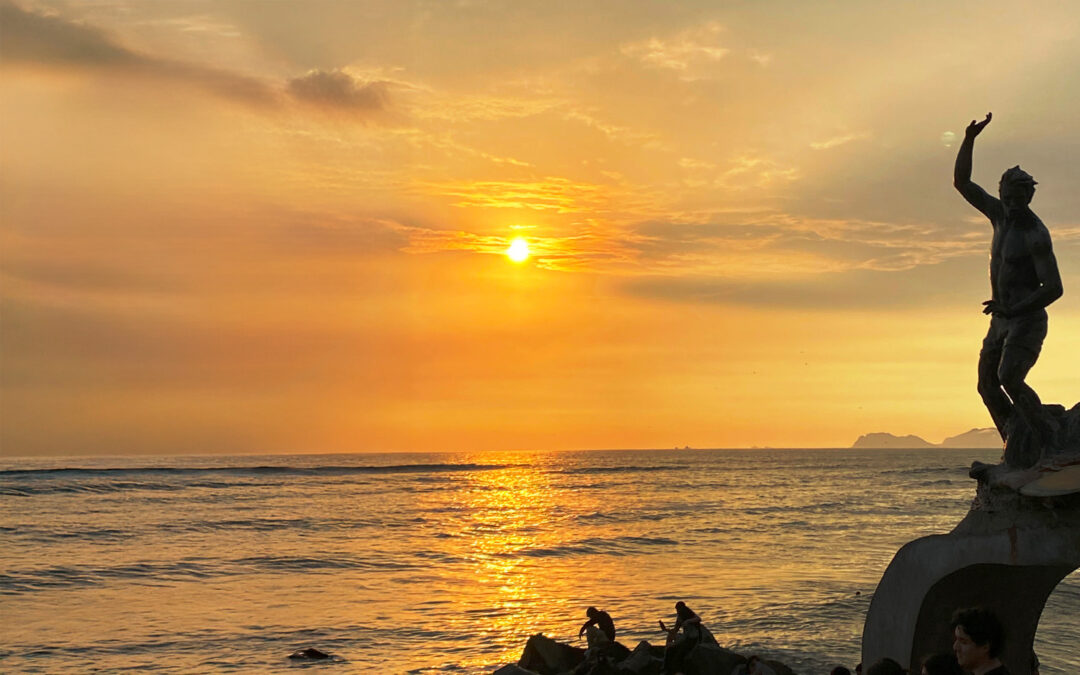
It was a beautiful afternoon with perfect weather. Lima’s waterfront was crowded: entire families enjoying the beach, parents and children arriving with their surfboards and equipment, surf schools with their instructors, tourists and vendors of drinks and ice cream to offer to that swarm of potential customers.
We were accompanying a friend from northern Peru who had come to visit us. Marcelo and I were taking him to the most pleasant and attractive spots. On the horizon you could see surfers skilfully riding the high waves of the Pacific Ocean – an ocean which despite its name is anything but peaceful. It was a real spectacle! The sun was preparing for its final scene of the day casting an exclusive backdrop of fiery orange and red across the sky.
In this beautiful setting, accessible only to a certain social class, everything seemed to be going perfectly. Amidst the crowd, I noticed a tiny, man as thin as a stick carrying four large sacks of waste material that he had collected: cardboard, plastic bottles, glass… This small figure, completely invisible in that environment, was preparing to climb a long flight of stairs, leading to the overpass that crossed the highway from one side to the other, from the beach to the road. He looked like an invisible ant burdened with a load three times his weight.
In that faceless crowd, his presence caught my attention. “Come, sit beside me for a while,” I said, pointing to the empty seat on the bench where I was sitting. He looked at with surprised, then smiled. He set down his heavy sacks and took a seat. “Hi, my name is Gustavo, and you?”. “Arthur,” he replied with a wide, toothless grin.
He explained that he had come from far away and that he needed to cross the highway, climbing up the steep staircase, to get the bus that would take him home. There, in his humble neighborhood, he would sell the waste material he had collected. This was his daily job which enabled him and his family to survive.
Marcelo gave him 5 Soles, the price of the bus ticket. We said goodbye shaking his sweaty hand warmly and wishing him good luck. As he climbed the stairs with his bags in his hand, every so often he looked back at us and flashed us his toothless smile.
In the midst of the faceless crowd, Arthur became the most important person, the one who touched our hearts, who stirred something deep within us, who connected us with the Beatitudes, to the way God sees.
Gustavo E. Clariá
Lighten the burden of others
Be in tune with God’s voice
Understand those who are next to us
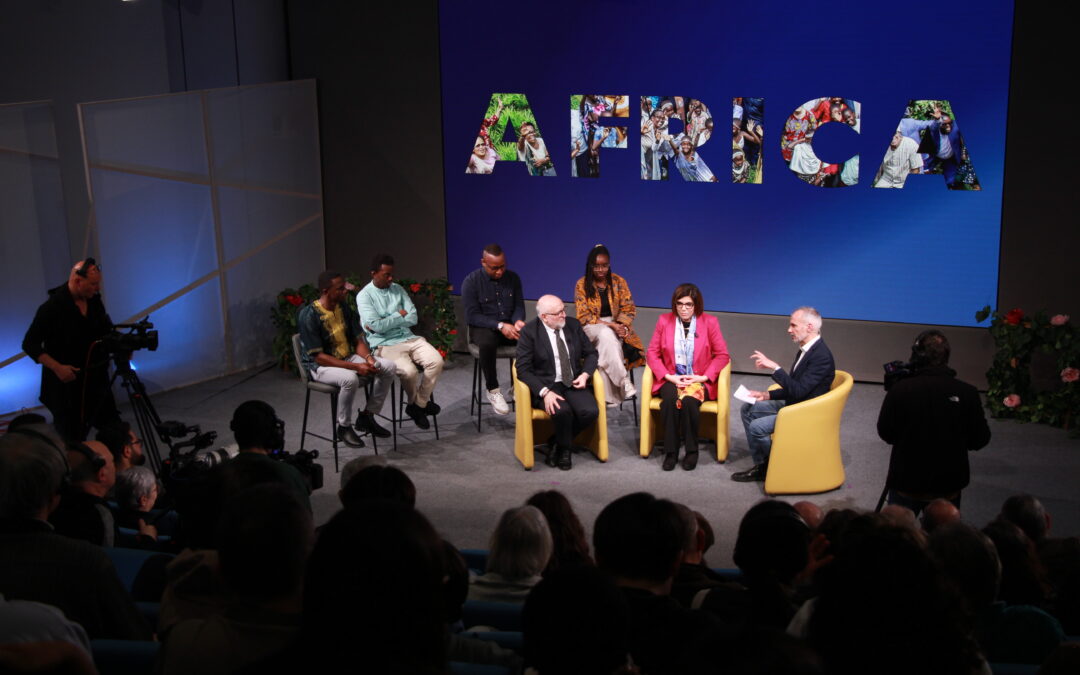
The African continent is made up of 54 States. It is crossed by the Equator and the tropics of Cancer and Capricorn, so much of the territory is located in the torrid zone and is characterized by deserts, savannahs and rainforests. It is the continent with the largest area affected by arid and warm climate. Thirty million km² with about one thousand four hundred million inhabitants.
Jesús Morán, Co-President of the Focolare Movement, accompanied by some members of the International Centre, visited some countries in the east and west of the continent from 13th January-9th February 2025. Margaret Karram, President of the Focolare Movement, joined live via video link on nine occasions, especially for the days dedicated to meetings with local communities.
Jesús Morán said, “It is a trip we will remember for a long time.” Margaret Karram added, “This journey which many have called ‘historic’ has remained in our hearts“. Even though I was connected by video, I can still see their faces, their smiles and their commitment. I was deeply moved by the testimony of the communities of the Movement which live the Gospel radically. I think we have a lot to learn from them. ”
The trip included stops in Ivory Coast, Sierra Leone, Kenya, Rwanda and Burundi but many other people from various other African countries participated in many of the meetings.
It is impossible to summarize the intensity and richness of life found in each community. You can see here a part of the Link Up Conference Call of 15th March 2025 which included a report on this journey which was truly an immersion in the life and culture of the African continent.
Here I am!
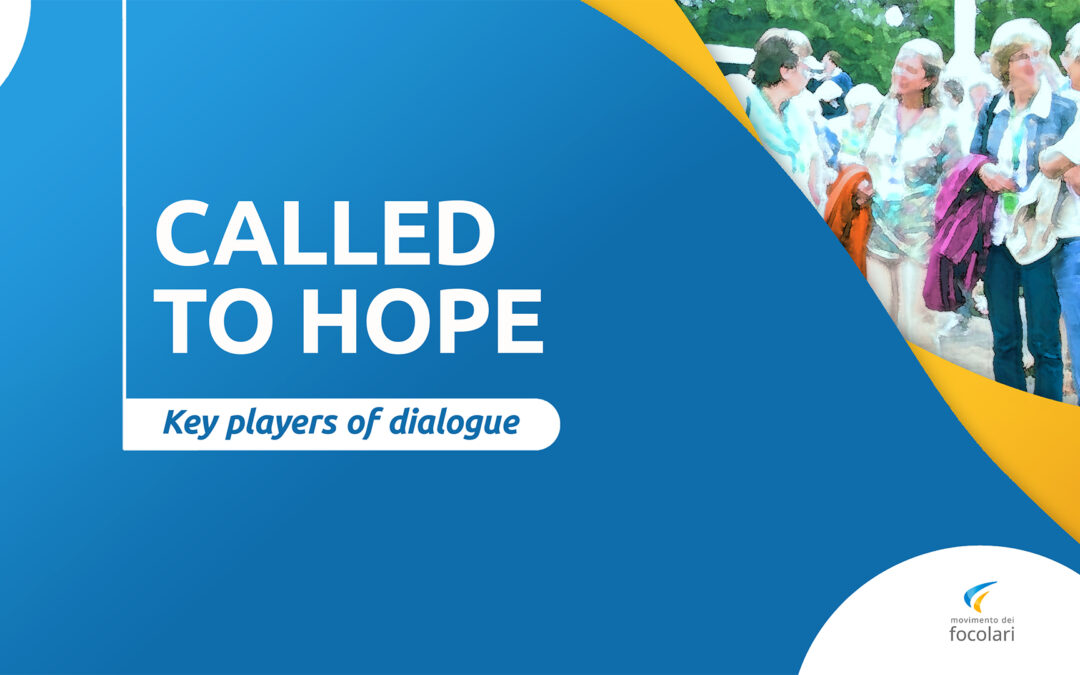
The ecumenical conference Called to hope – Key players of dialogue, will take place from the 26th to the 29th of March 2025 at the Mariapolis Centre of Castel Gandolfo (Italy). It is promoted by “Centro Uno”, the Focolare Movement’s international secretariat for Christian unity. There will be more than 250 faithful of 20 Christian Churches participating in person, coming from over 40 countries of 4 continents, including the Philippines, Serbia, Bulgaria, Slovakia, Ireland, Venezuela, United States. There will be 15 translations, and the conference will also be broadcast via streaming.
Thursday, the 27th of March, the group will go to Rome to visit the Basilica of St. Paul Outside the Walls (at 4:00pm). An ecumenical prayer of reconciliation and for peace open to all is planned.
The conference programme will also focus on the three anniversaries that occur this year: in the context of the Jubilee Year “Pilgrims of Hope” of the Catholic Church, we will commemorate the 1,700th anniversary of the Council of Nicaea, the coincidence of the date of the celebration of Easter for all Churches, and the 60th anniversary of the abolition of mutual excommunications between the Church of Rome and the Church of Constantinople.
Among the ecumenical personalities present who will speak: Msgr. Andrea Palmieri, Undersecretary of the Vatican Dicastery for Promoting Christian Unity, Msgr. Derio Olivero, President of the Episcopal Commission for ecumenism and dialogue of the Italian Bishops’ Conference, Prof. Dr. Martin Illert, representative of the World Council of Churches (WCC), Archbishop Khajag Barsamian representative of the Armenian Apostolic Church to the Holy See, Dr. Natasha Klukach, Director of Research and Operations of the Global Christian Forum, Dr. William Wilson, President of the Pentecostal World Fellowship (via video message), Dr. Elisabeth Newman of the Baptist World Alliance, Dr. Margaret Karram and Dr. Jesús Morán, President and Co-president of the Focolare Movement.
Why is it urgent to work for ecumenism?
In this time of divisions and great challenges – wars, the increase in refugees around the world, unequal distribution of wealth, almost irreversible damage to the earth’s ecosystem – as Christians, we are called together to bear witness to the hope of the Gospel and to be protagonists of dialogue and unity, committing ourselves to live together for peace, to build fraternity, to spread hope. Christian unity is instrumental in bringing peace wherever it is lacking.
Stefania Tanesini
Know how to be amazed!
Train yourself to love
Don’t be discouraged by mistakes
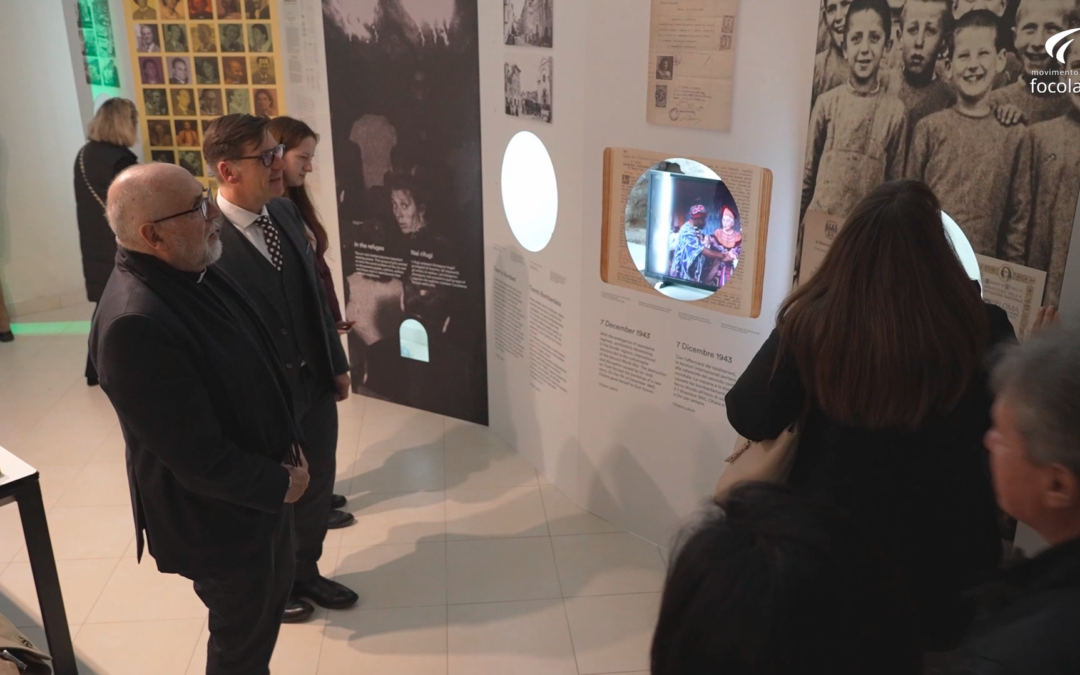
Enable subtitles and select your preferred language.
Start again!
Don’t stop at appearances
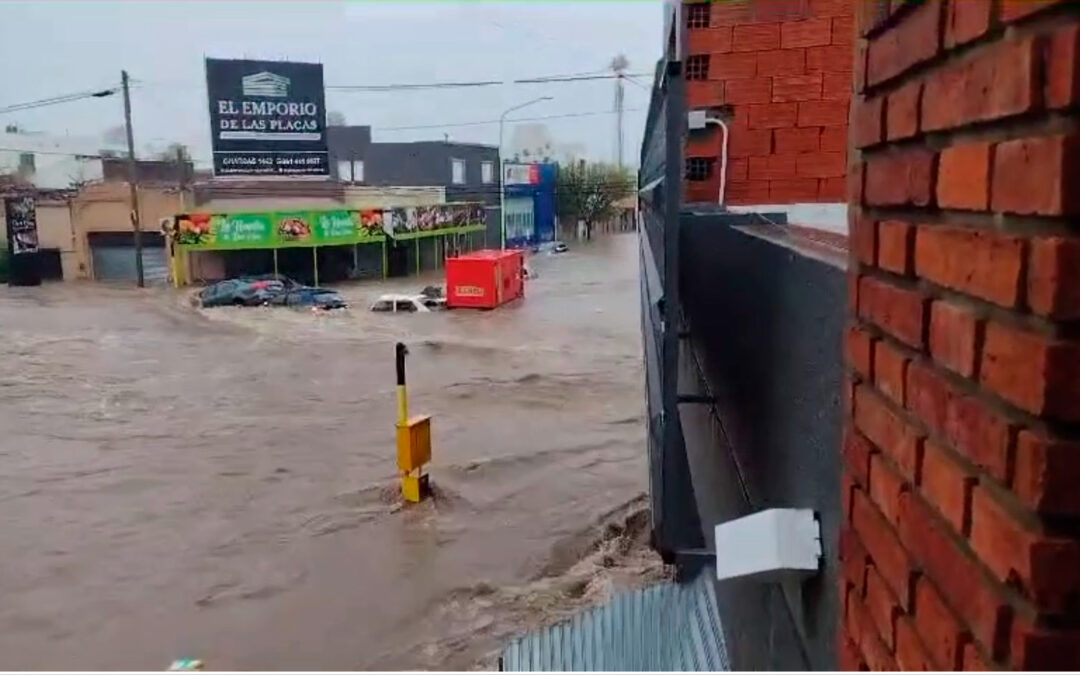
Bahía Blanca is a coastal city located at the gateway to Argentine Patagonia begins. With its 370,000 inhabitants, it is the economic, religious and cultural centre of a vast region. Just a few kilometres away, another 80,000 people live in the city of Punta Alta. Together, they have a very important petrochemical hub, a network of 7 different ports (including multipurpose, grain, fruit, fishing, gas, oil and fertilizers) and the main base of the Argentine Navy.
In this region, the average rainfall in a year is 650 mm, but on Friday, 7th March, 2025, 400 mm fell in just 7 hours. As this huge amount of water made its way to the sea, it gathered speed and destroyed everything in its path: bridges, canals, railways, roads, roads, vehicles, houses, shops… and people.
The population suddenly found itself in scene of unimaginable devastation, as if there had been a tsunami. A sudden power outage also cut off telephone communications, leaving everyone in the dark about the well-being of their relatives, friends, and colleagues.
However, something deep within this community awoke and all the universal laws converged into a single verb: to serve.
As soon as the water and mud allowed, thousands of people began to pour into the streets. Everyone assessed the damage in their own home, but then immediately turned their attention to their neighbours, to see if they needed help. Those who managed to get their situation under control devoted themselves entirely to helping others. We were all witnesses and protagonists of a gigantic miracle that has multiplied, with incredible creativity and strength.
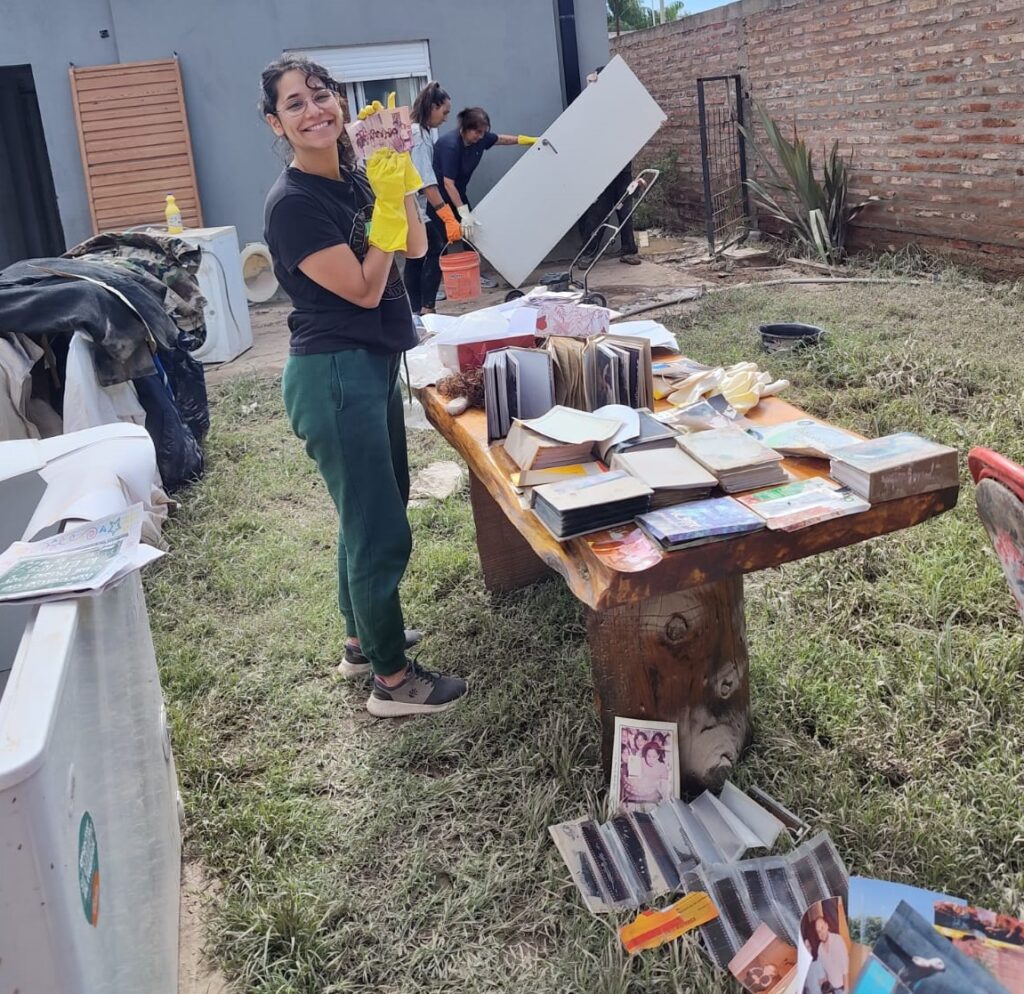
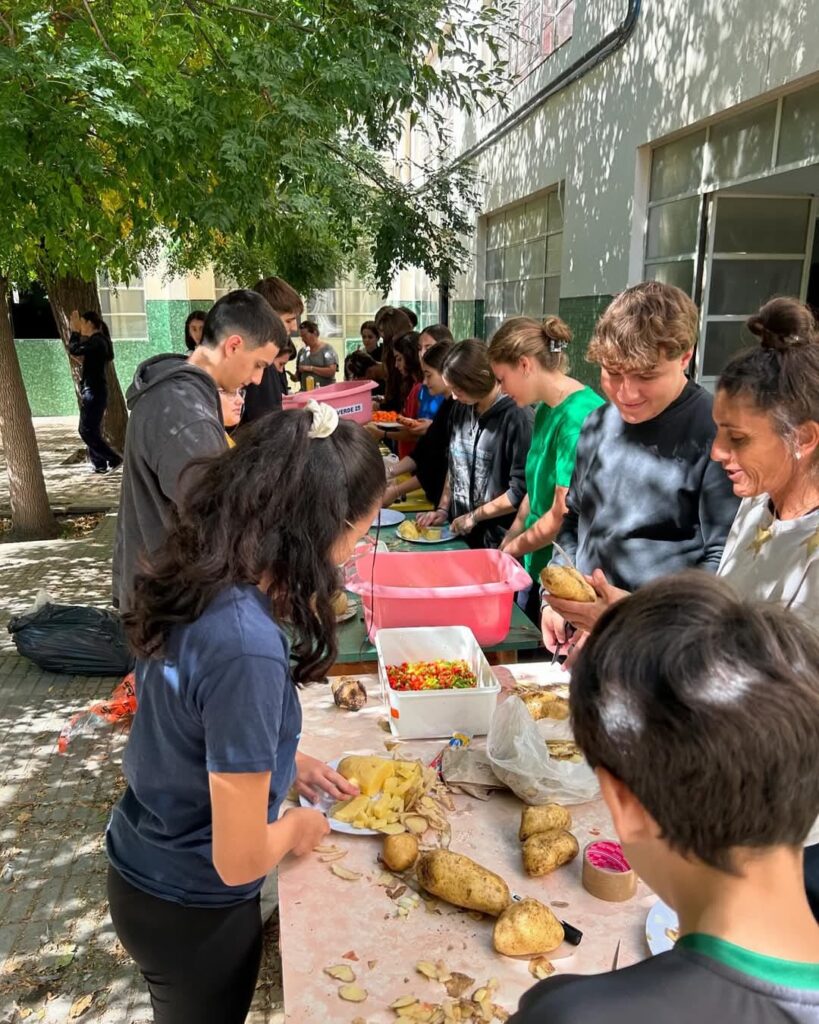
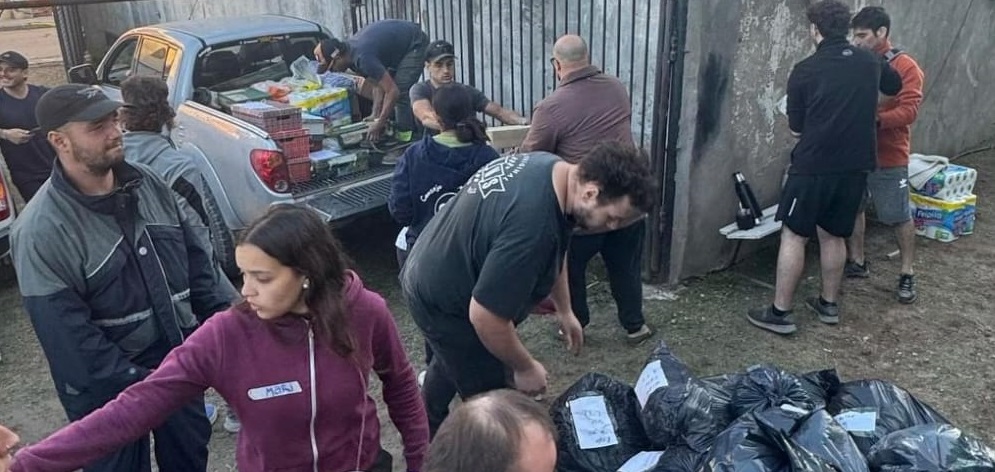
The only thing that mattered was what could be done with our hands: help remove water and mud from homes, clean, tidy up, look for rags, buckets of water, disinfectant, take the injured to health centres, take care of pets, accommodate people who had lost everything, offer strength, encourage, hug, share suffering. No one complained but said, “It was very difficult for me, but in comparison to what happened to others…”
While I was helping some friends, a couple approached and distributed pasties, others came with drinks. Those who had an electricity generator offered to recharge mobile phone batteries. Others provided pumps to drain flooded areas. An optician donated glasses to those who had lost theirs. A woman distributed disinfectant, a doctor made house calls, a man offered his services as a bricklayer and another as a mechanic. Everything was shared: candles, food, clothes, nappies, mattresses, drinking water, brushes and hands – countless hands.
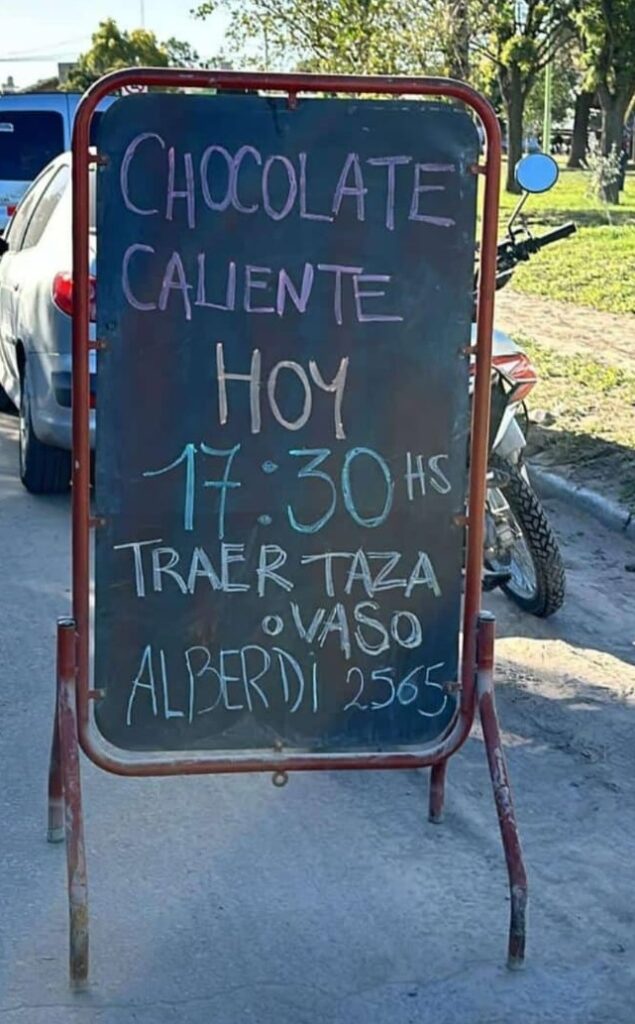
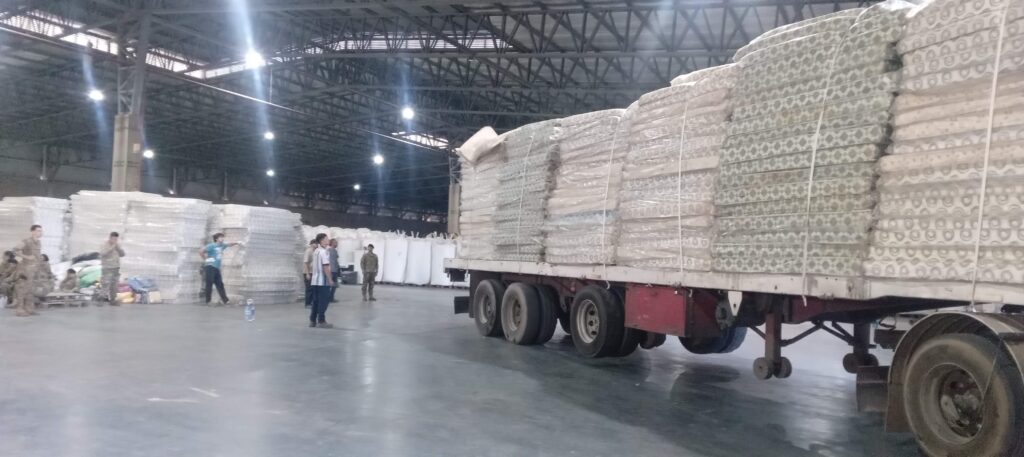
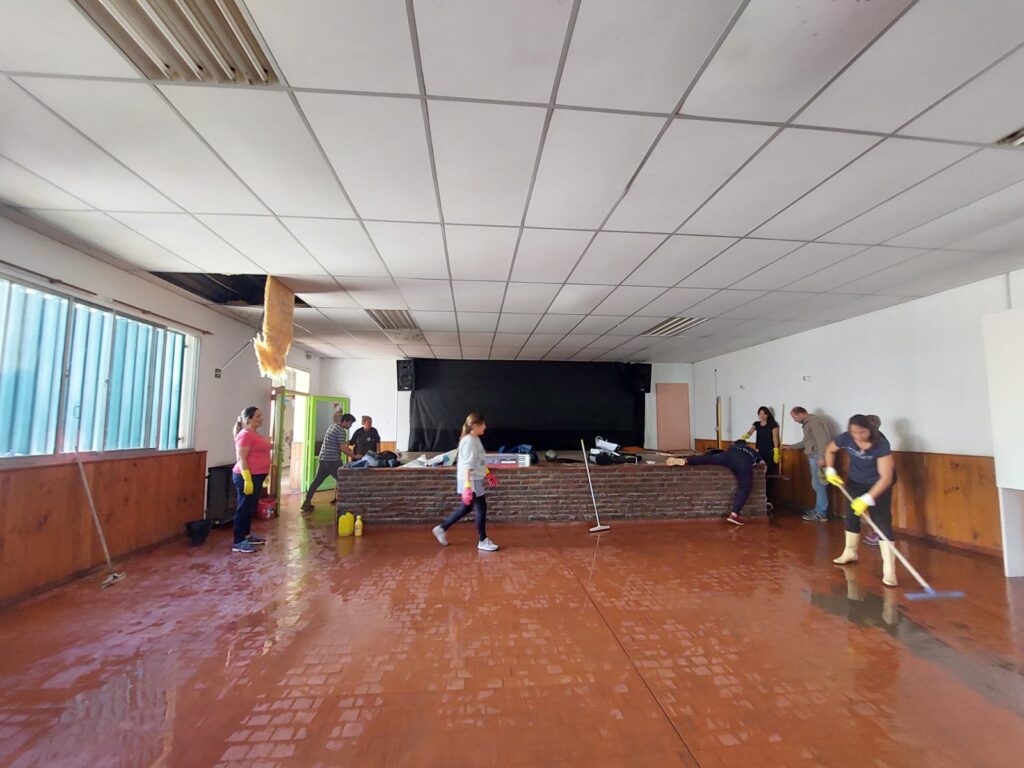
And then came the solidarity of the whole country and of people from all over the world. By truck, by train, by bus, in vans… tons of donations, which needed more volunteers for loading, unloading, sorting and delivery. Volunteers kept multiplying. And also money, donated with great generosity. Parishes, clubs, schools, companies, all the existing organizations gave everything they could. Generous financial donations also arrived. Parishes, clubs, schools, businesses—every organization gave everything they could. And then, another kind of organization emerged: groups of friends. Like makeshift “patrols,” each group took charge of a section of the city where government aid would likely take longer to arrive. Even now, they continue going door to door, recording every need and ensuring that help arrives swiftly.
All the hands of these people, whether they knew it, believed it, or even imagined it, have become “divine hands”. Because they were the most tangible way God could reach those in need. Personally, I experienced deep anxiety not knowing if my siblings or friends were safe. I wanted to reach them, but it was impossible. So I decided to help wherever I could. I called it my “square metre.” Later, I finally managed to reach my loved ones, only to discover that others, strangers, had helped them where I could not.
Days later, some parts of the city are still under. The suffering and difficulties continue. The losses have been immense. Everywhere you meet people with big dark circles under their eyes and aching muscles from working almost without rest. But with their hearts wide open and a fullness in their eyes, for having given everything for others.
Juan Del Santo (Bahía Blanca, Argentina)
Photo: © Focolari Bahia Blanca
Those who give, receive!

With what eyes do we look at the world and our fellow travellers in the adventure of life? It is a question of vital importance, in an era like ours marked by polarisation and disagreements, loneliness and distances between the haves and the have-nots, without forgetting the increasingly pervasive presence of artificial intelligence. Yet, at the same time, the thirst for harmony and truth grows.
Chiara Lubich used to say that everything depends on which “eyes” we look at people with. If we look with the eyes of the heart, which are the eyes of Love, we will not stop at appearances, we will instead grasp the deeper reality that is hidden in every human being. And from the gaze of the heart proceeds action, the quality of the relationship, becoming close, being near to the other person. (1)
In 1961 Chiara wrote:
If you enter the Gospel … you’ll immediately find yourself on the mountain ridge. Therefore, already at the top, already in God, even though looking over the side you’ll see that the mountain is not one mountain but a mountain chain and that for you, life is to walk along the crest up to the end.
Every Word of God contains both the minimum and the maximum that he can ask of you, so when you read, “Love your neighbour as yourself” (Mt 19:19), you have the law of fraternal love at its highest degree.
Your neighbour is another you, and you must love him or her bearing that in mind. When neighbours cry, you must cry with them, and when they laugh, laugh with them. If they lack knowledge, be ignorant with them. If they have lost a parent, make their suffering your own. …
What has value for you is God who is both their Father and yours. Don’t make excuses for love. Your neighbours are those who pass next to you, be they rich or poor, beautiful or ugly, brilliant or uneducated, holy or sinful, a fellow citizen or a foreigner, a priest or a layperson, whoever.
Try to love whoever passes next to you in the present moment of your life. You will discover within yourself a new energy and strength you did not know you had. They will add flavour to your life, and you will find answers to your thousand whys. (2)
Chiara Lubich
Watch the video
Be conscious of God’s love for me
Be close to those in need
Hope in God
Be discerning
Be the first to love
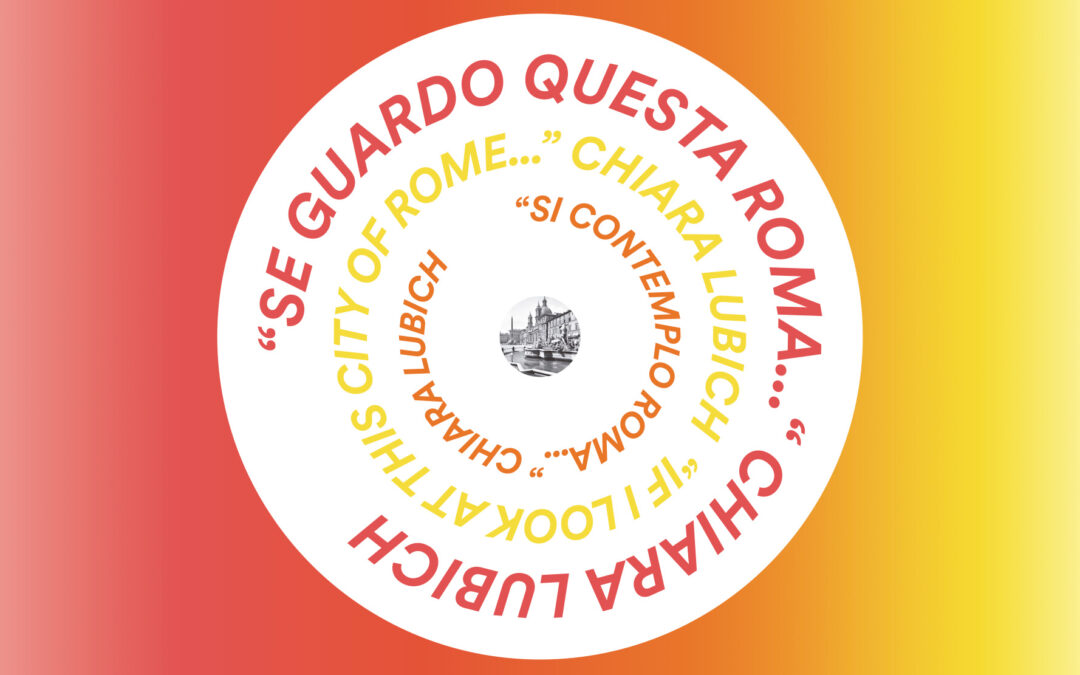
An exhibition dedicated to Chiara Lubich (1920-2008), witness and inspirer of the universal value of fraternity. A stop for those visiting Rome in this Jubilee year; at the centre of the exhibition is the theme of the “city”, as a privileged place for building fraternal relationships, open to the world. The multimedia exhibition has been produced by the Chiara Lubich Centre and the Historical Museum Foundation of Trentino.
On Saturday, 15th March, 2025, starting at 6:30 PM, the inaugural event of the exhibition will take place with an artistic moment inspired by the fiction film “Chiara Lubich – Love Conquers All” (directed by Giacomo Campiotti). Pianist Carmine Padula will perform the pieces he composed for the film’s soundtrack. This will be followed by theatrical readings of some of Chiara Lubich’s texts and then a dialogue on some extracts of the film, with Saverio d’Ercole, creative producer of Eliseo Entertainment.
On the afternoon of Sunday, 16th March, 2025, there will be a moment dedicated to young people, based on Chiara Lubich’s text from October 1949, “The Resurrection of Rome.” This will be followed by a piano concert offered by Paolo Vergari.
From 15th March, 2025 until 31st January, 2026, the exhibition will be open from 10:00 AM to 5:00 PM, on Tuesday to Sunday. Bookings can be made up to 8:00 PM at the Focolare Meeting Point (Via del Carmine, 3 – Rome).
Young guides will be available upon request to accompany visitors.